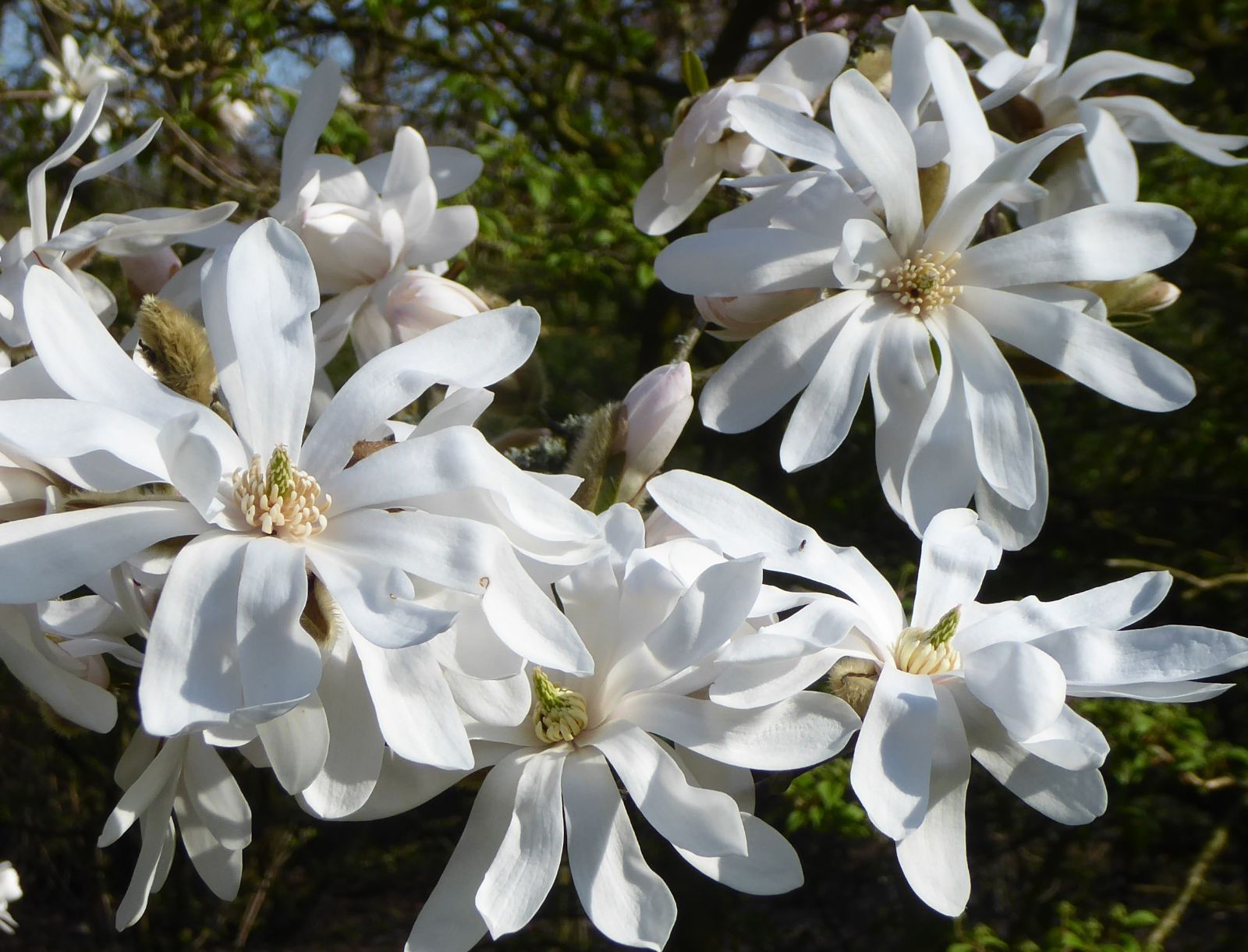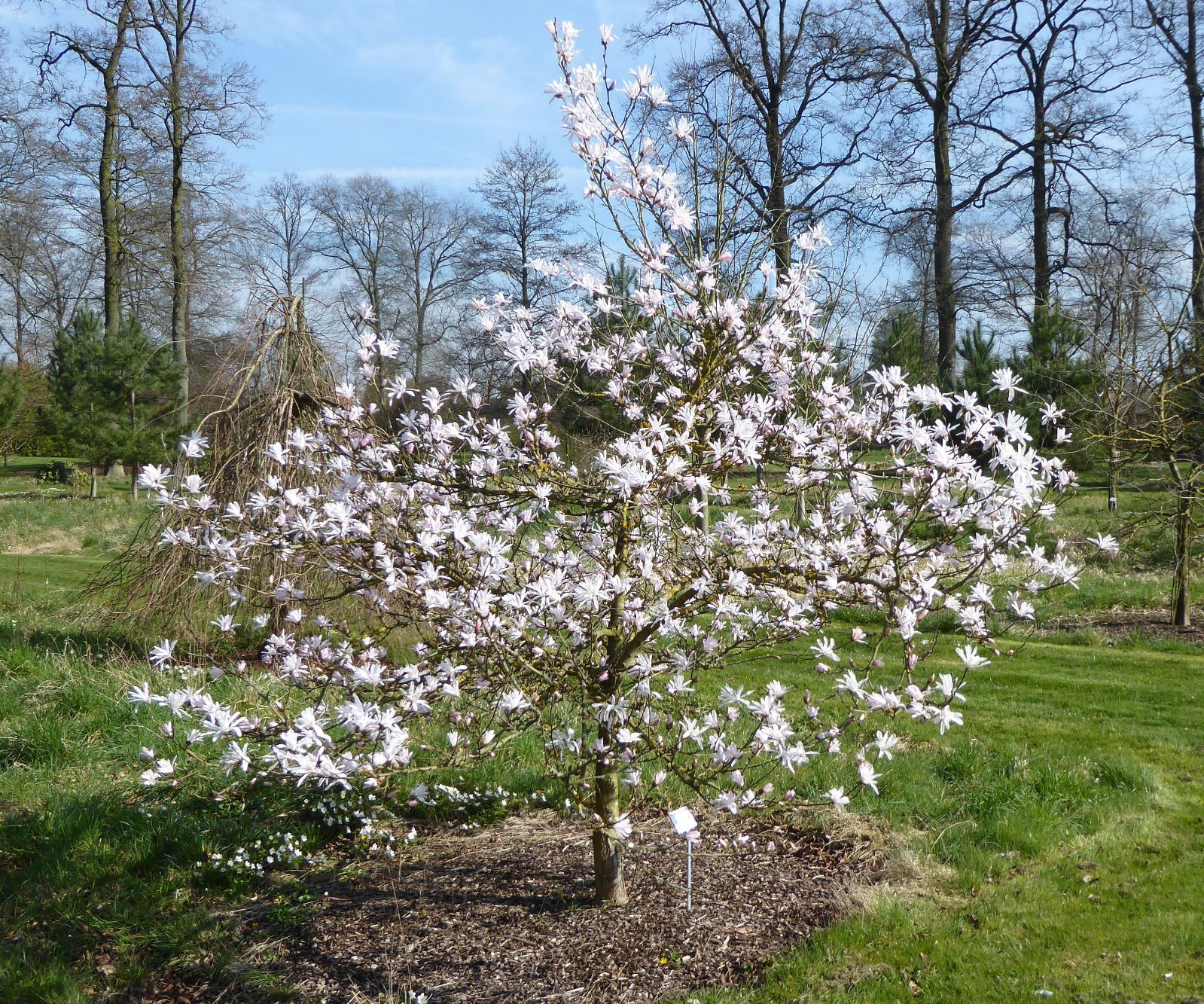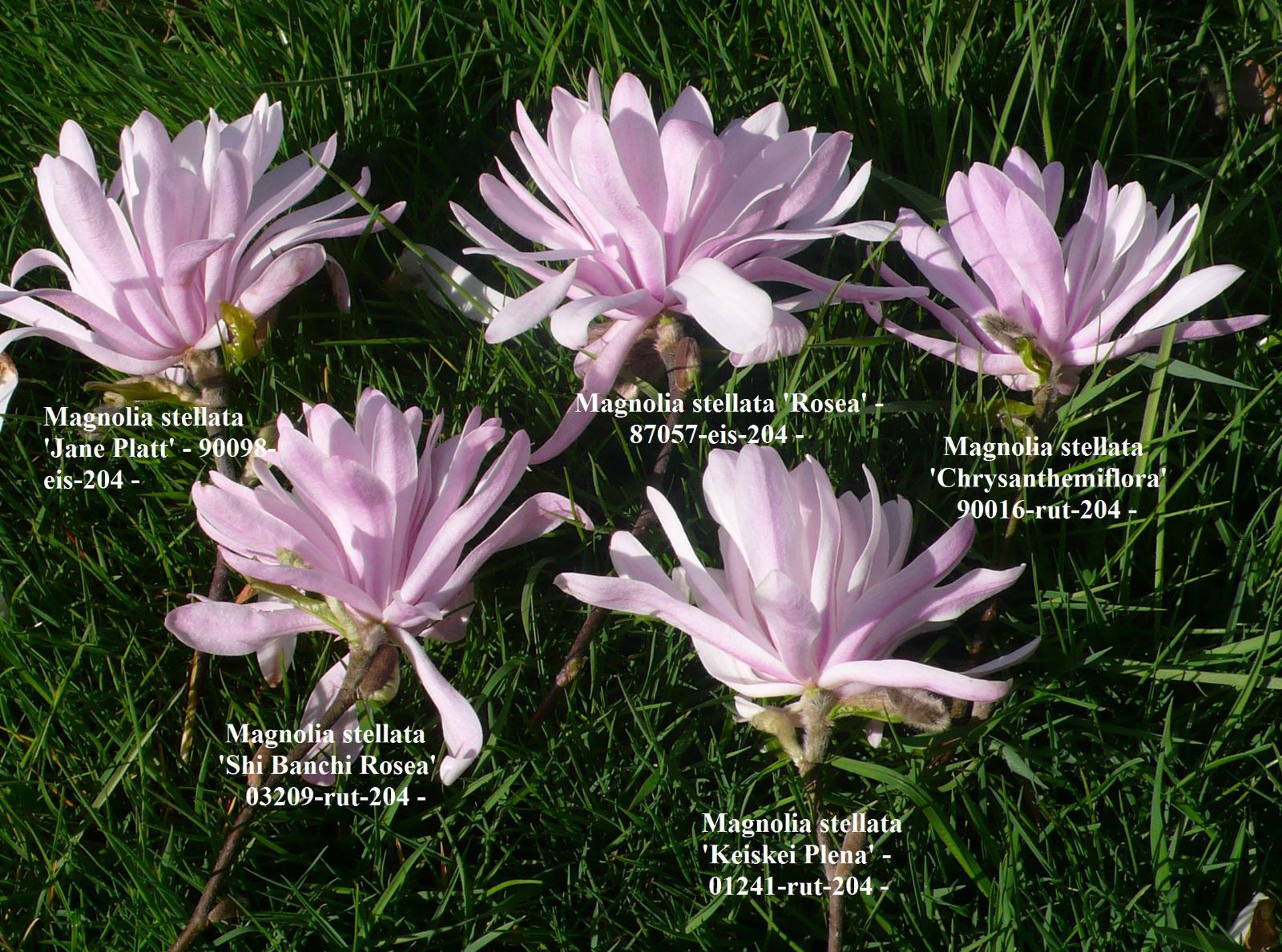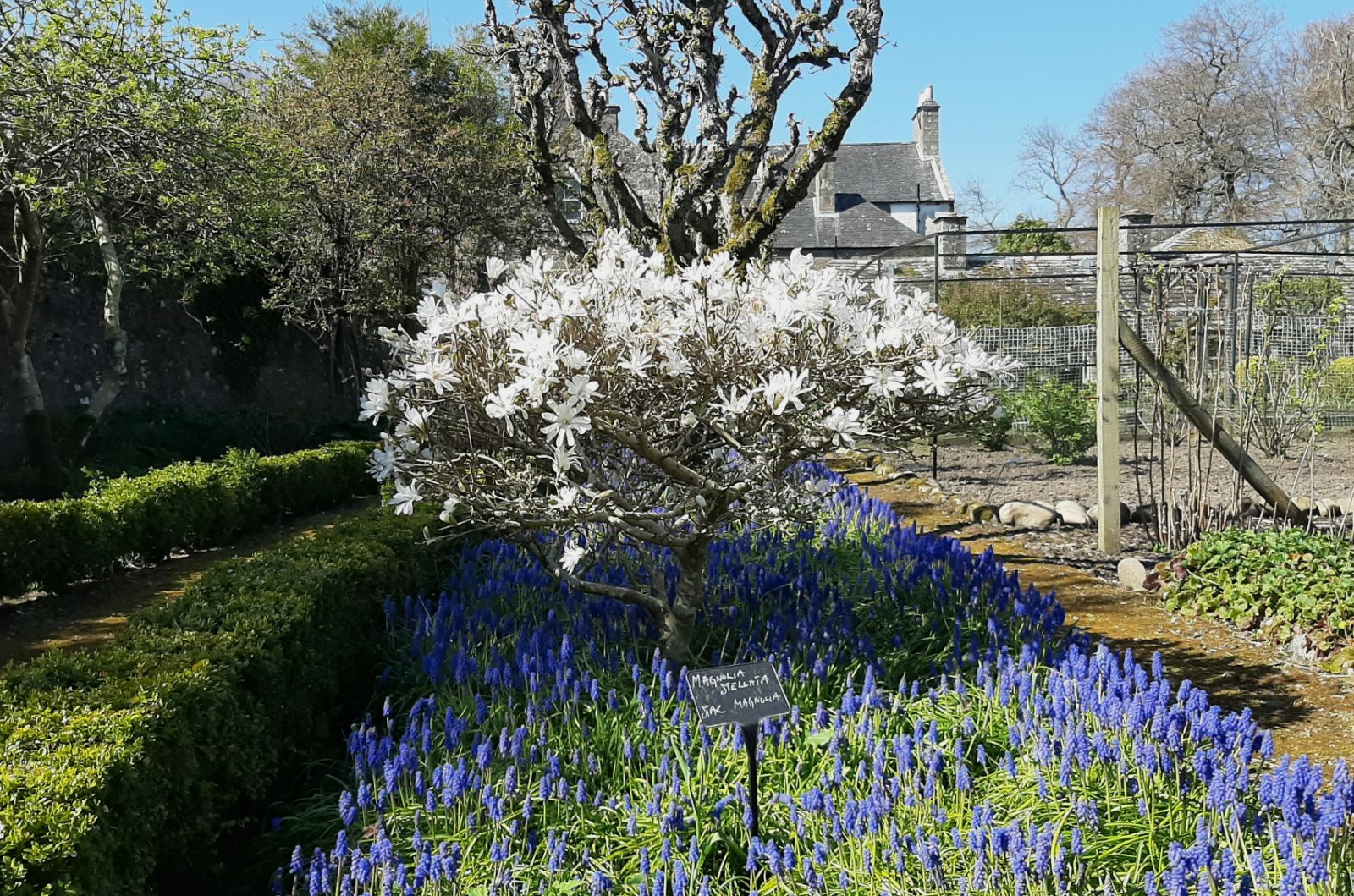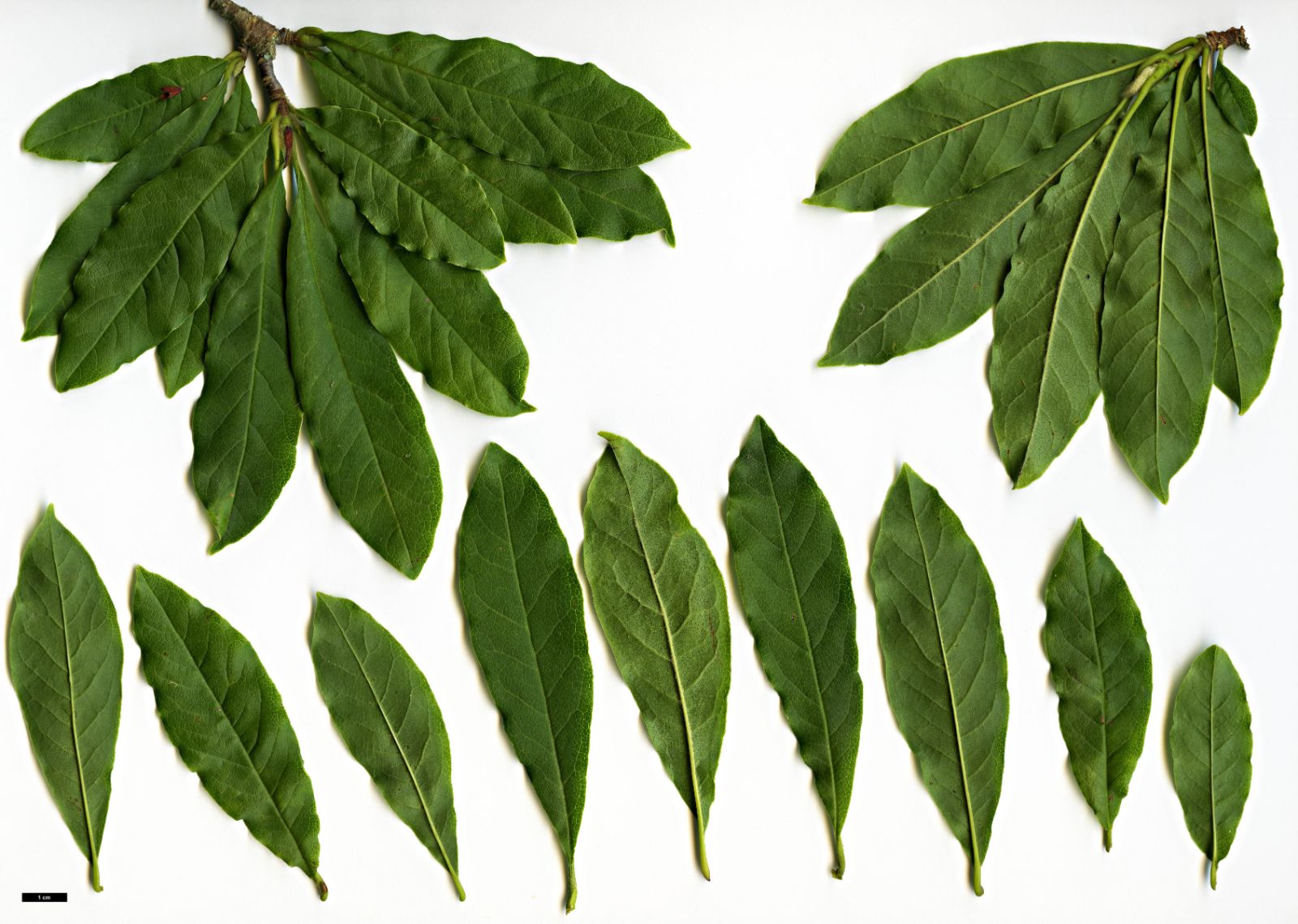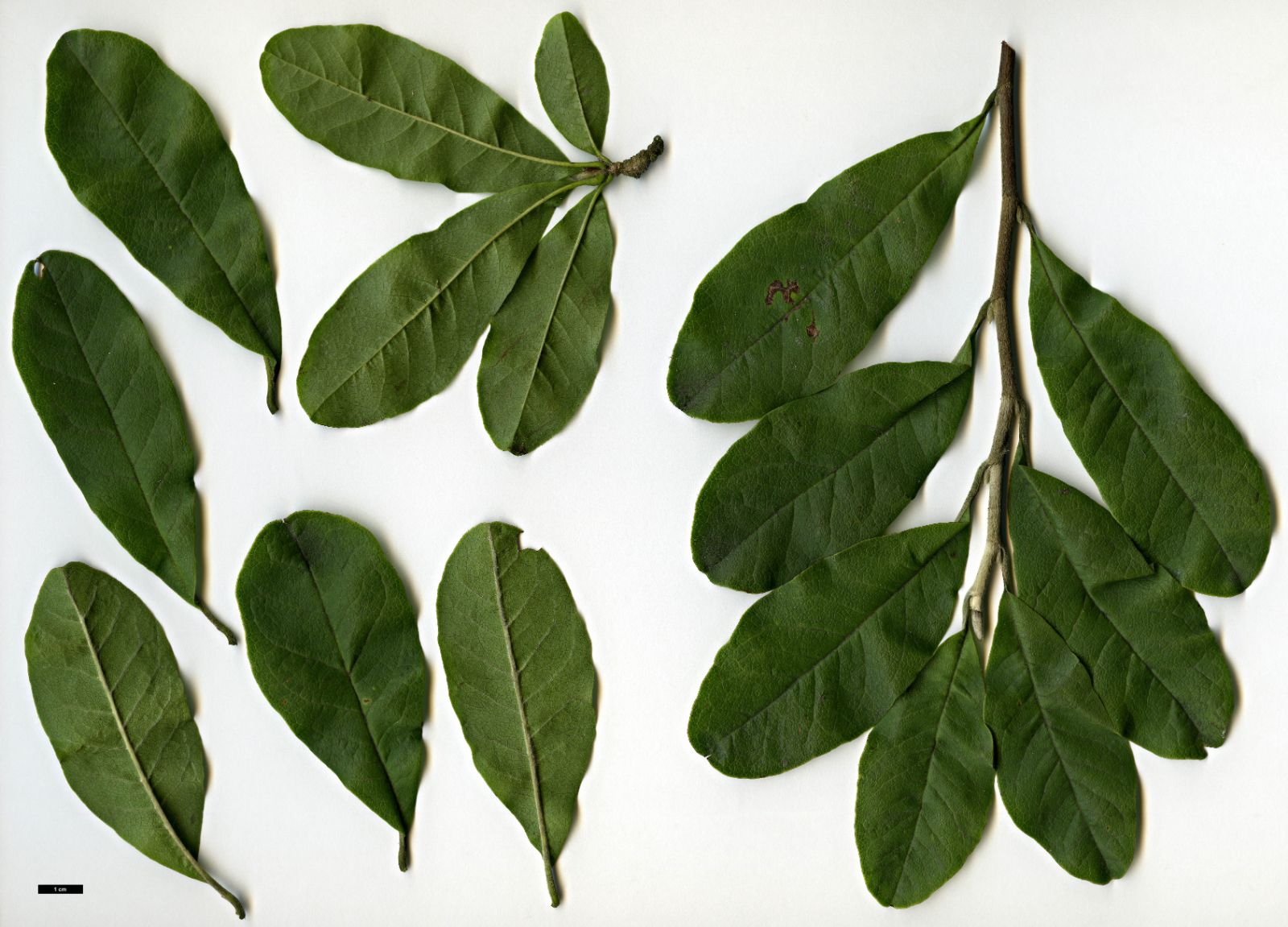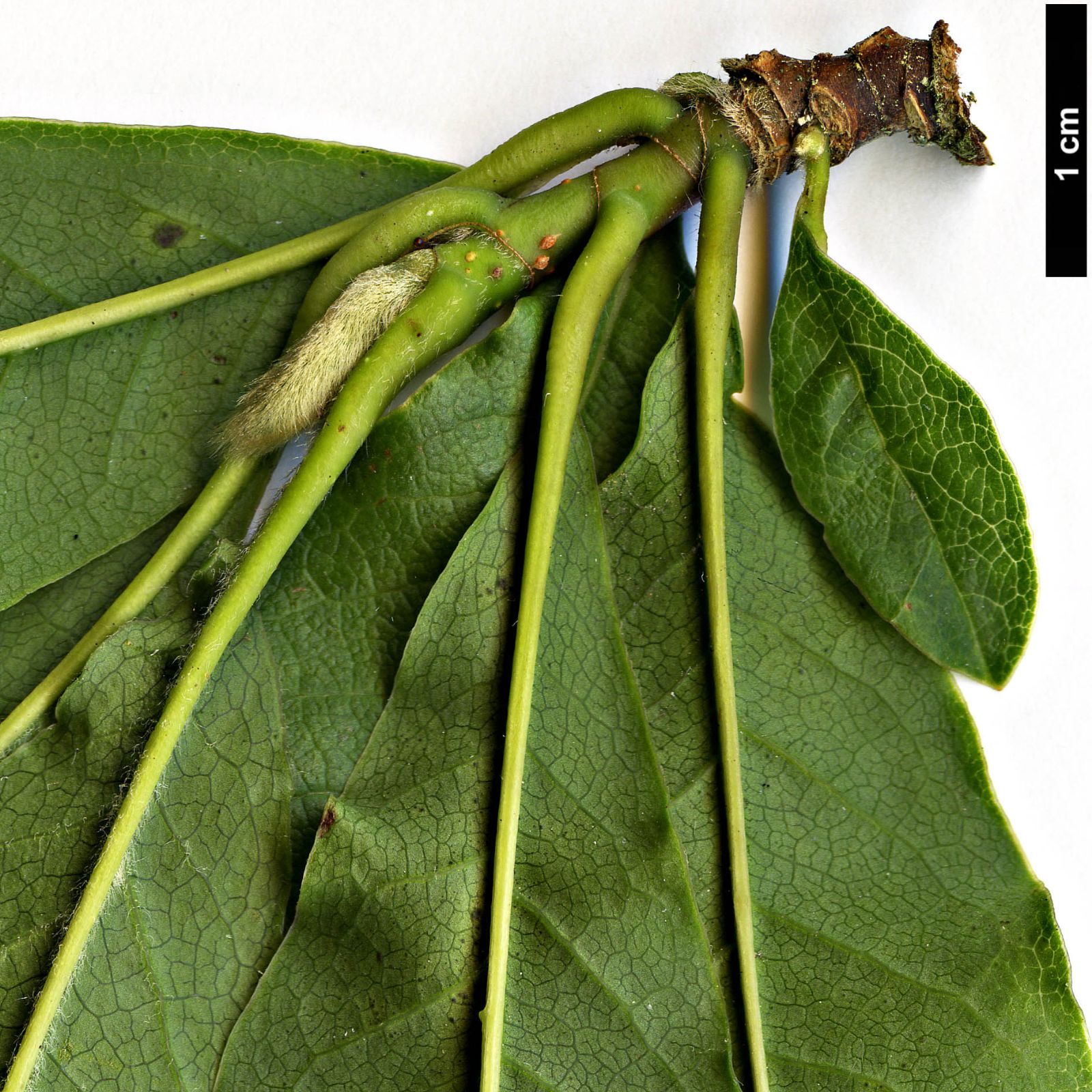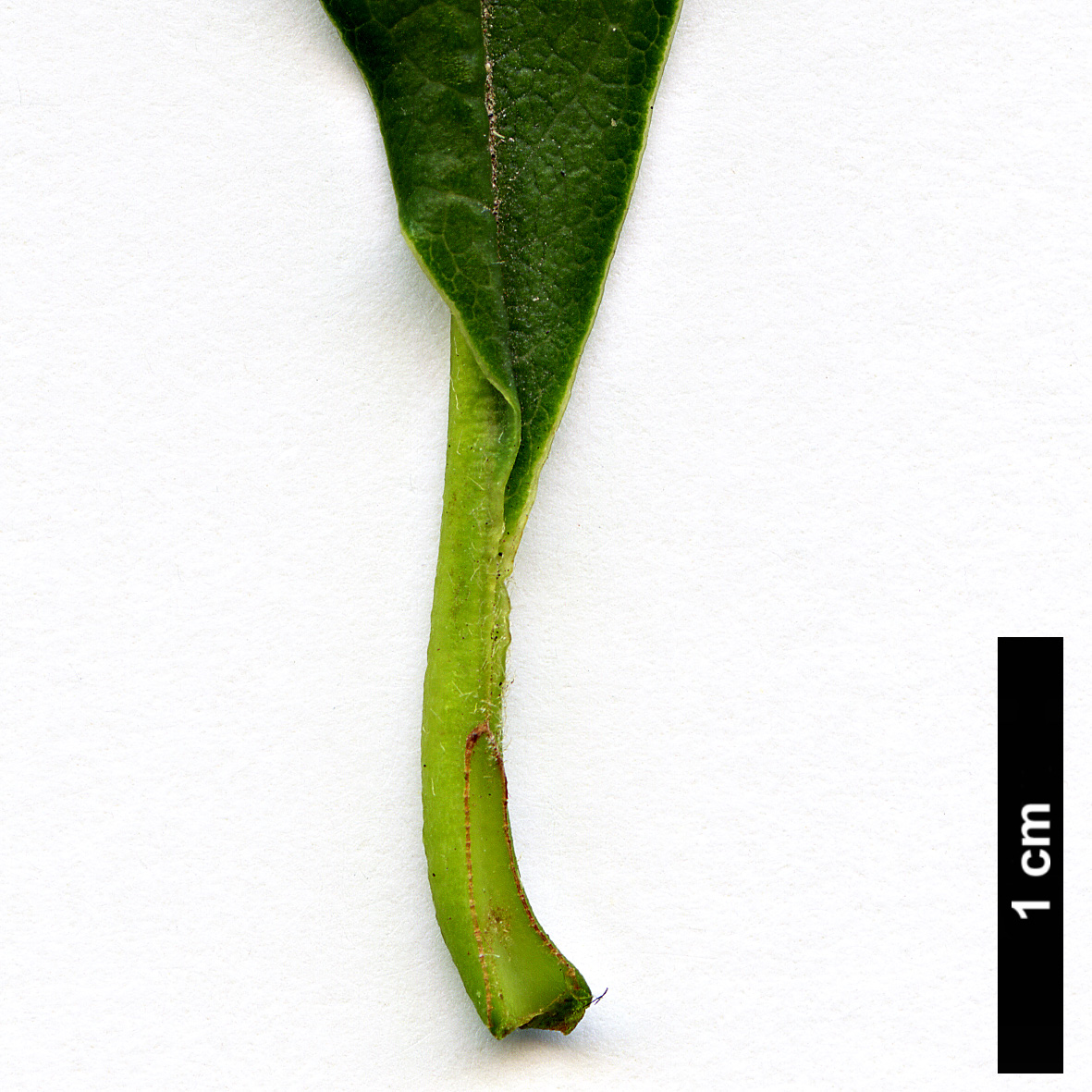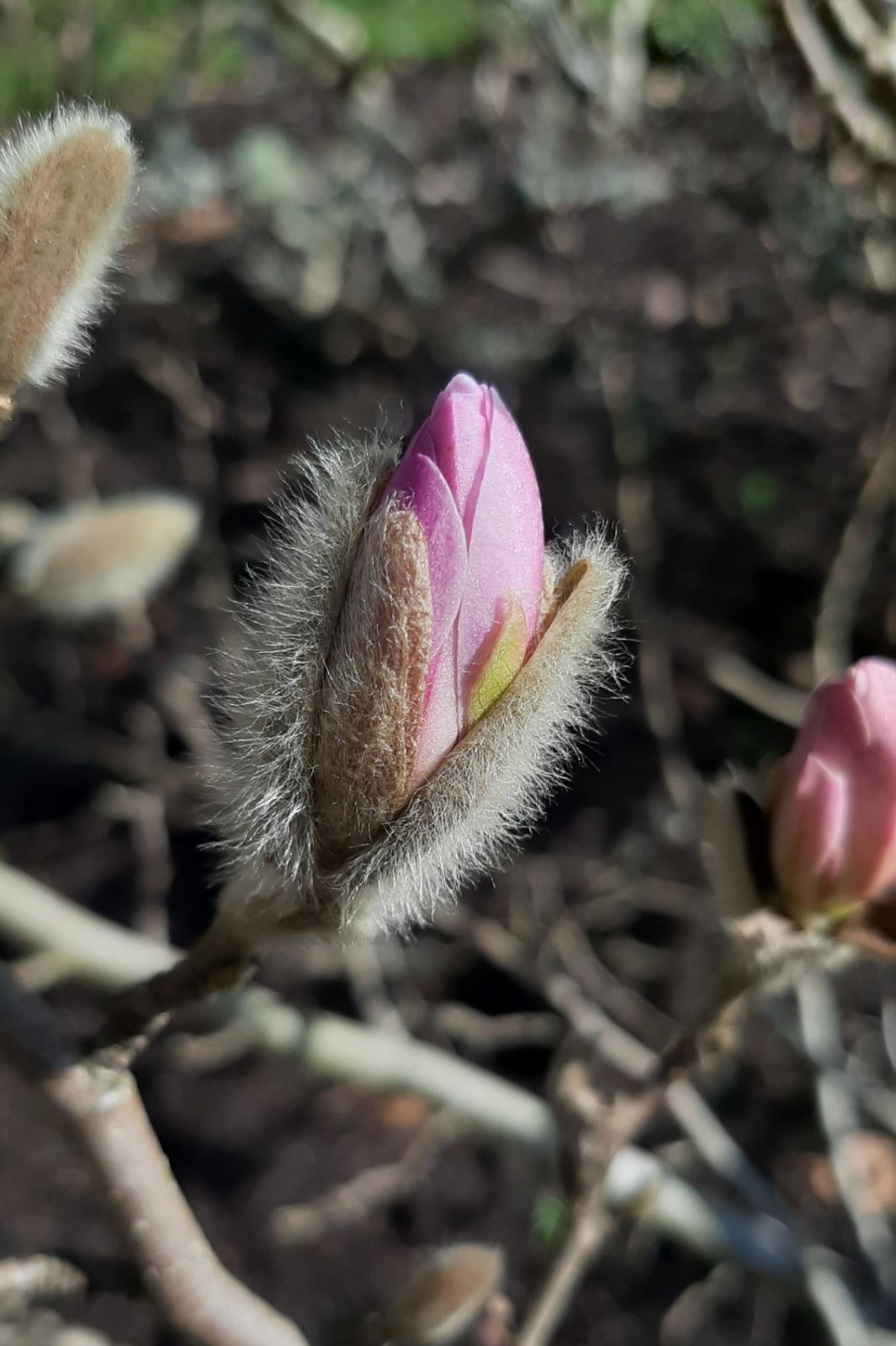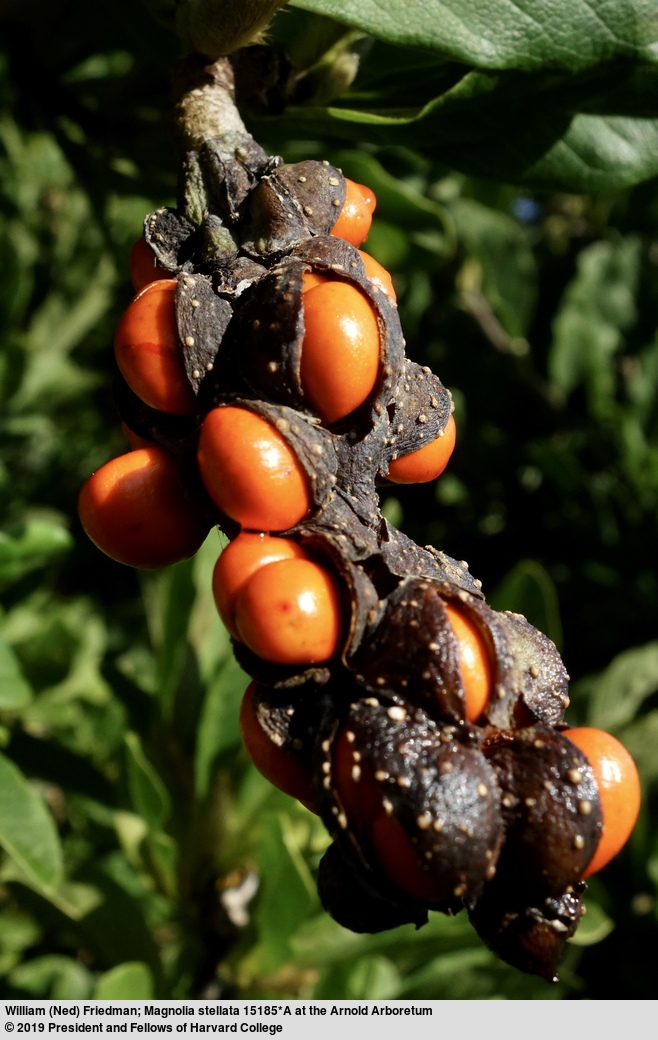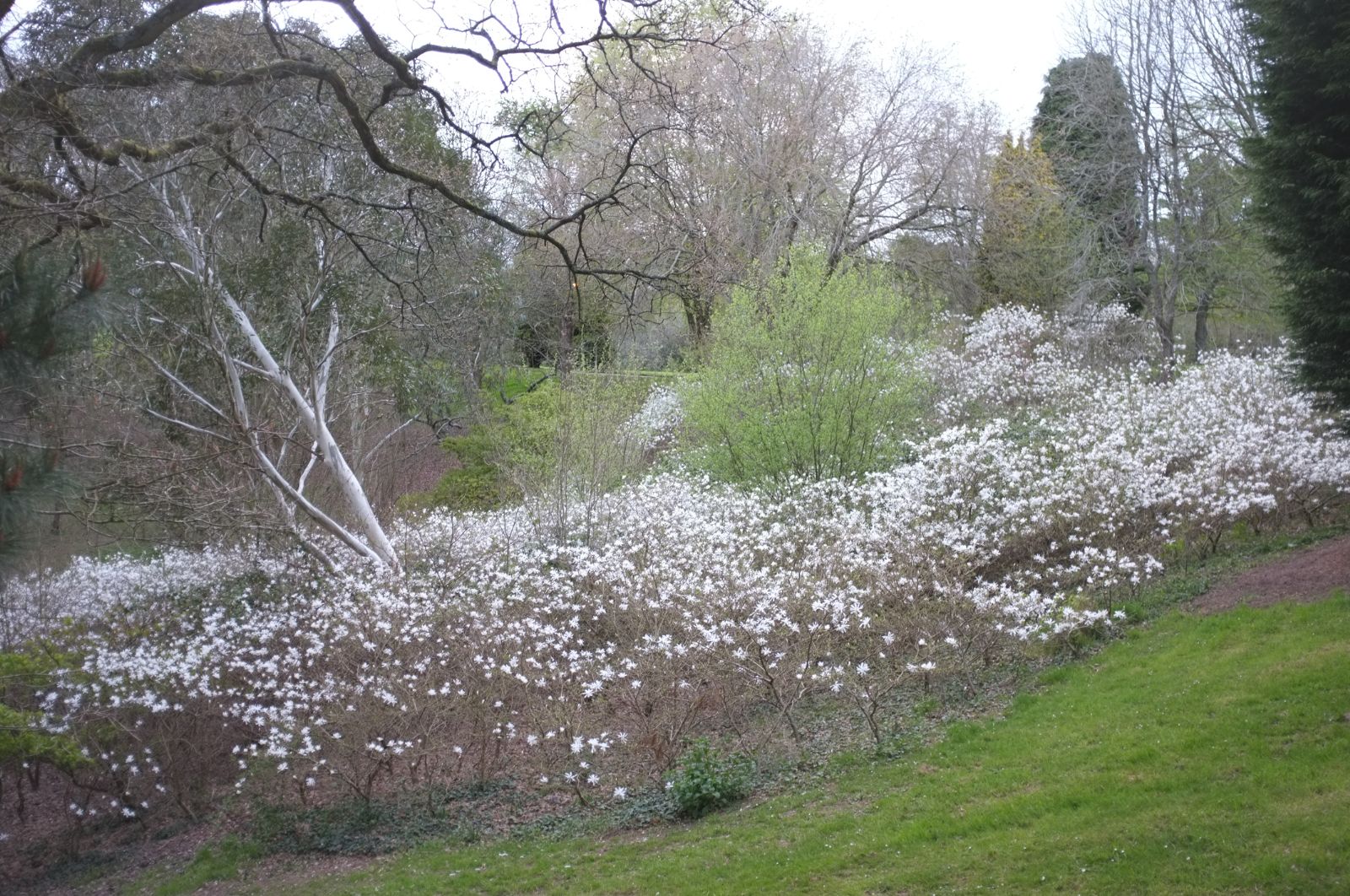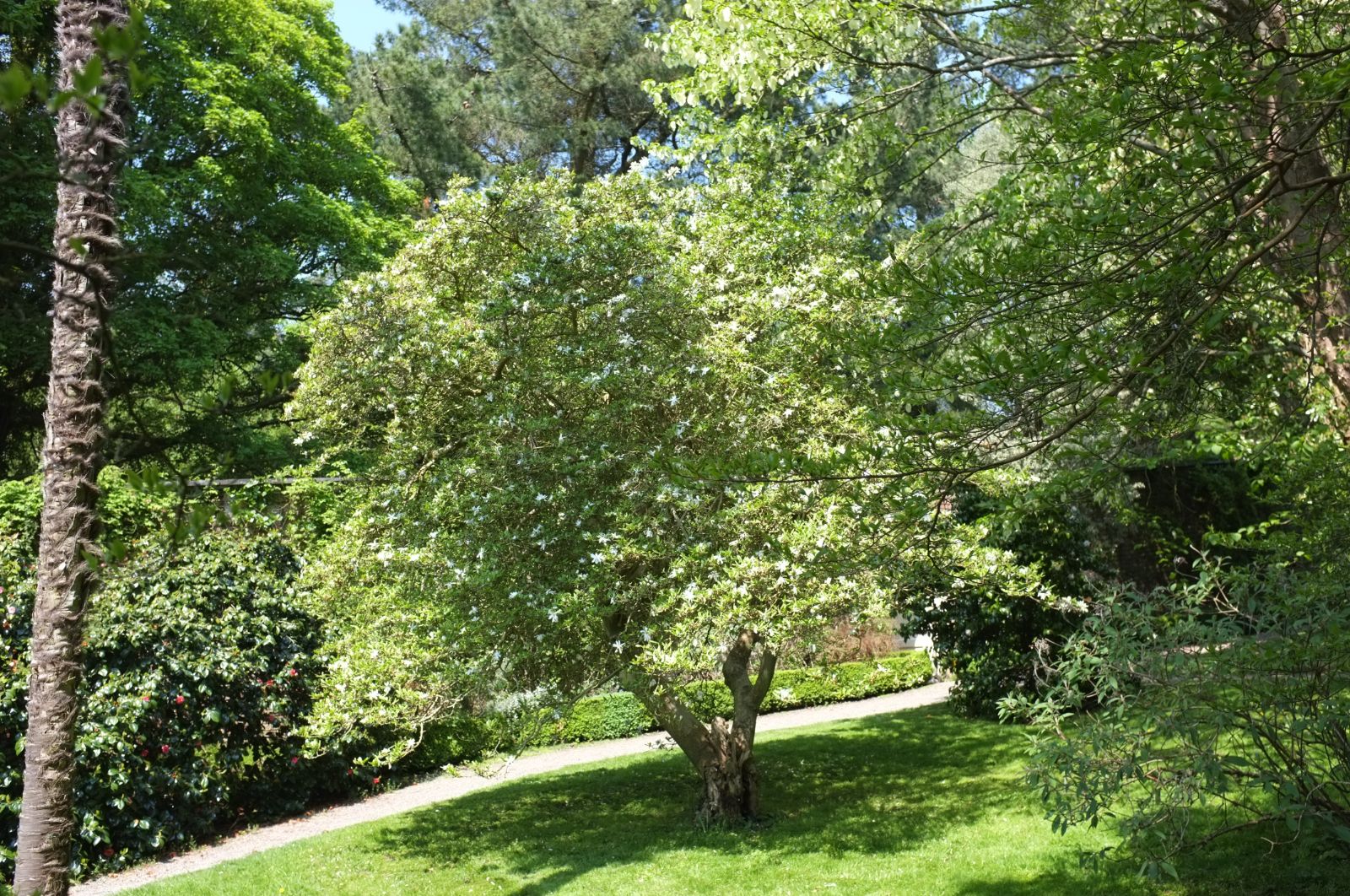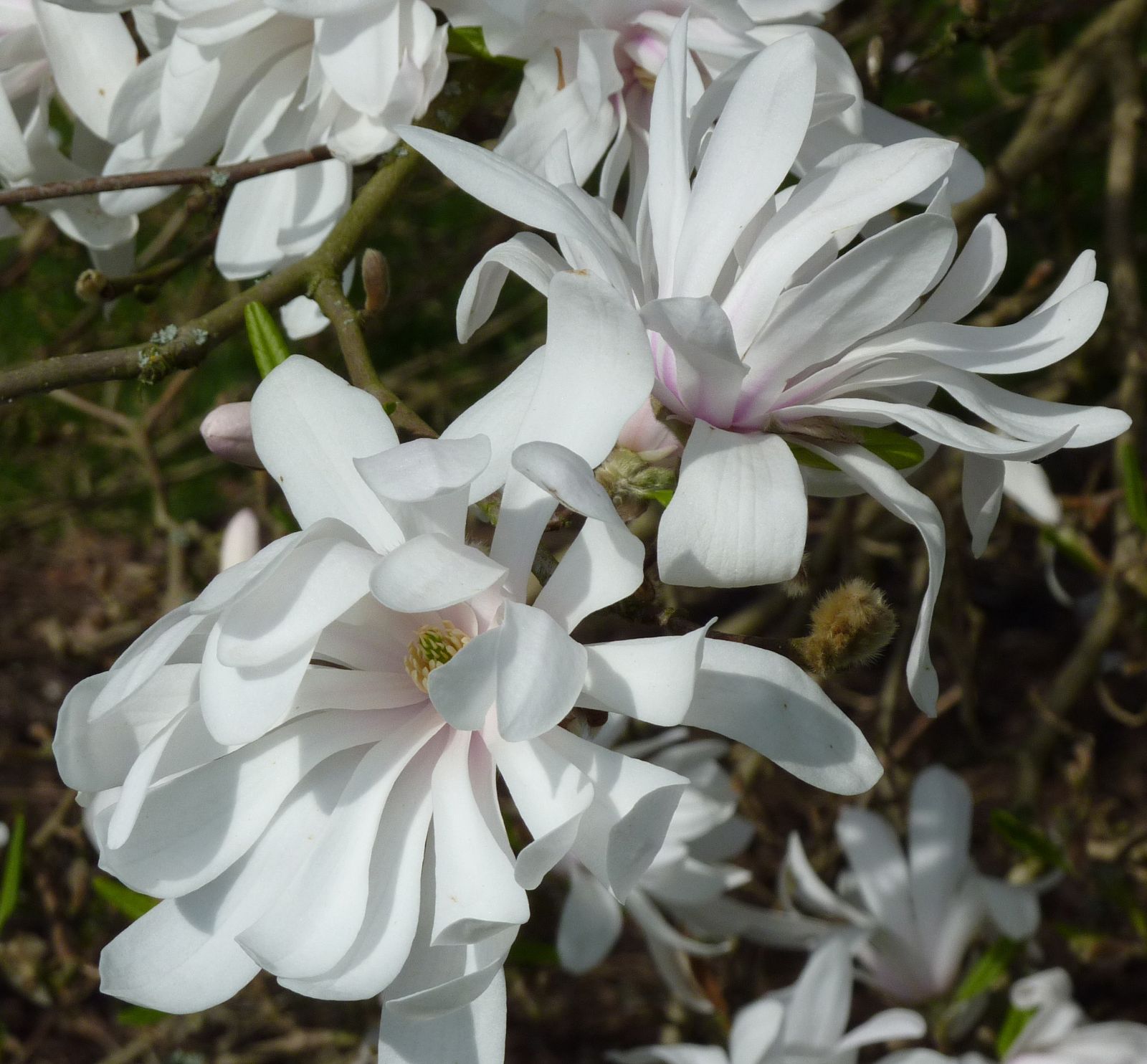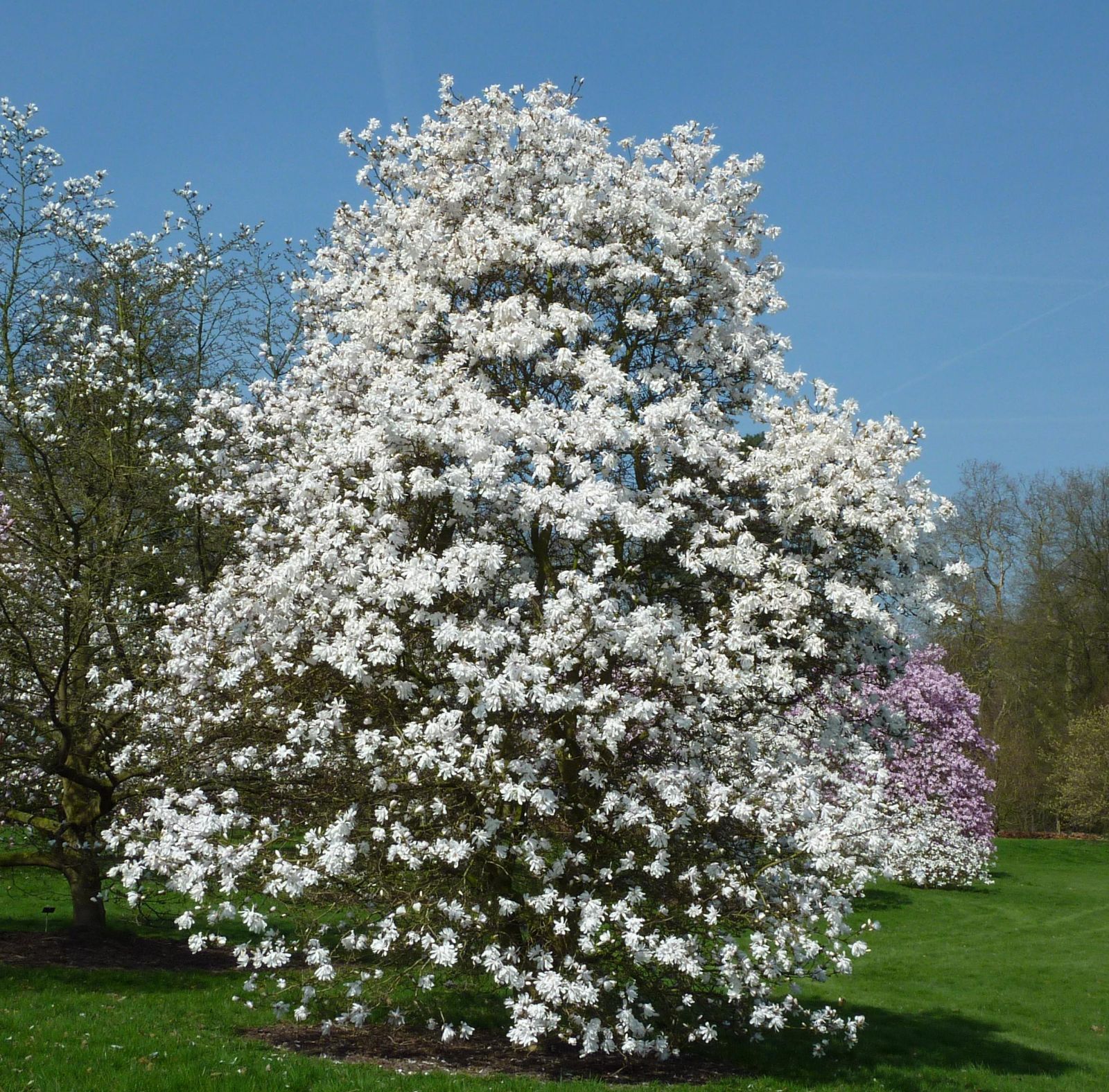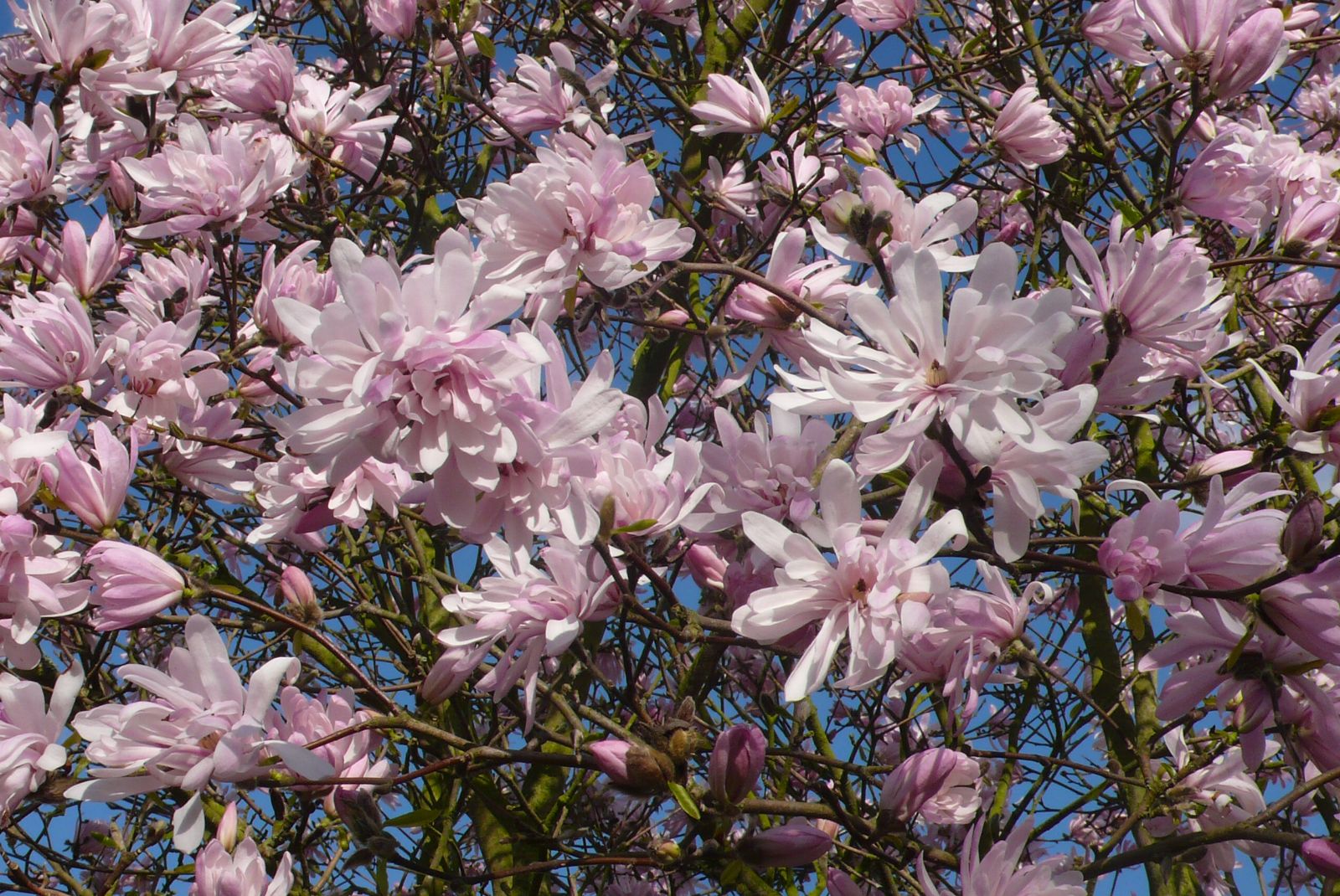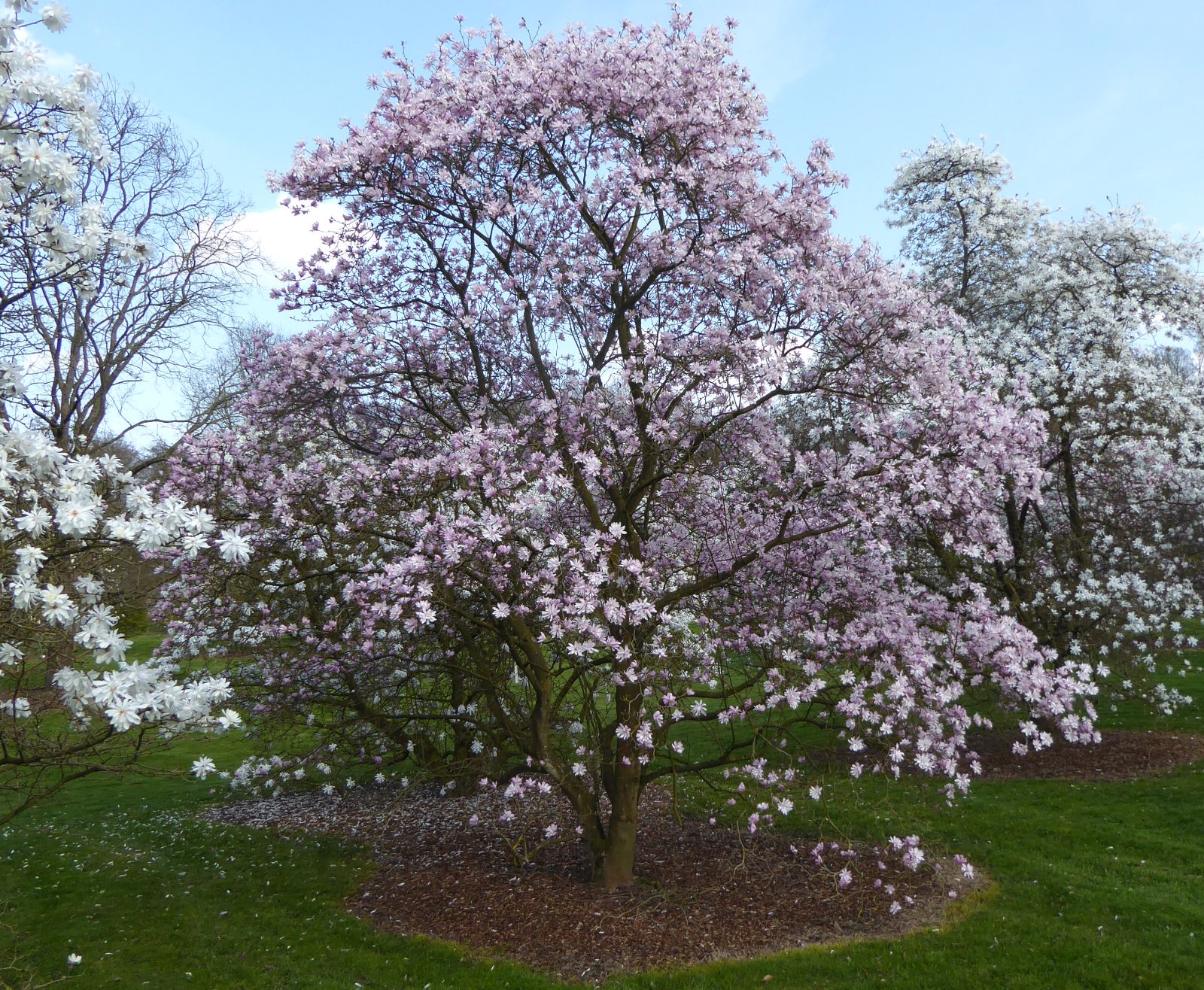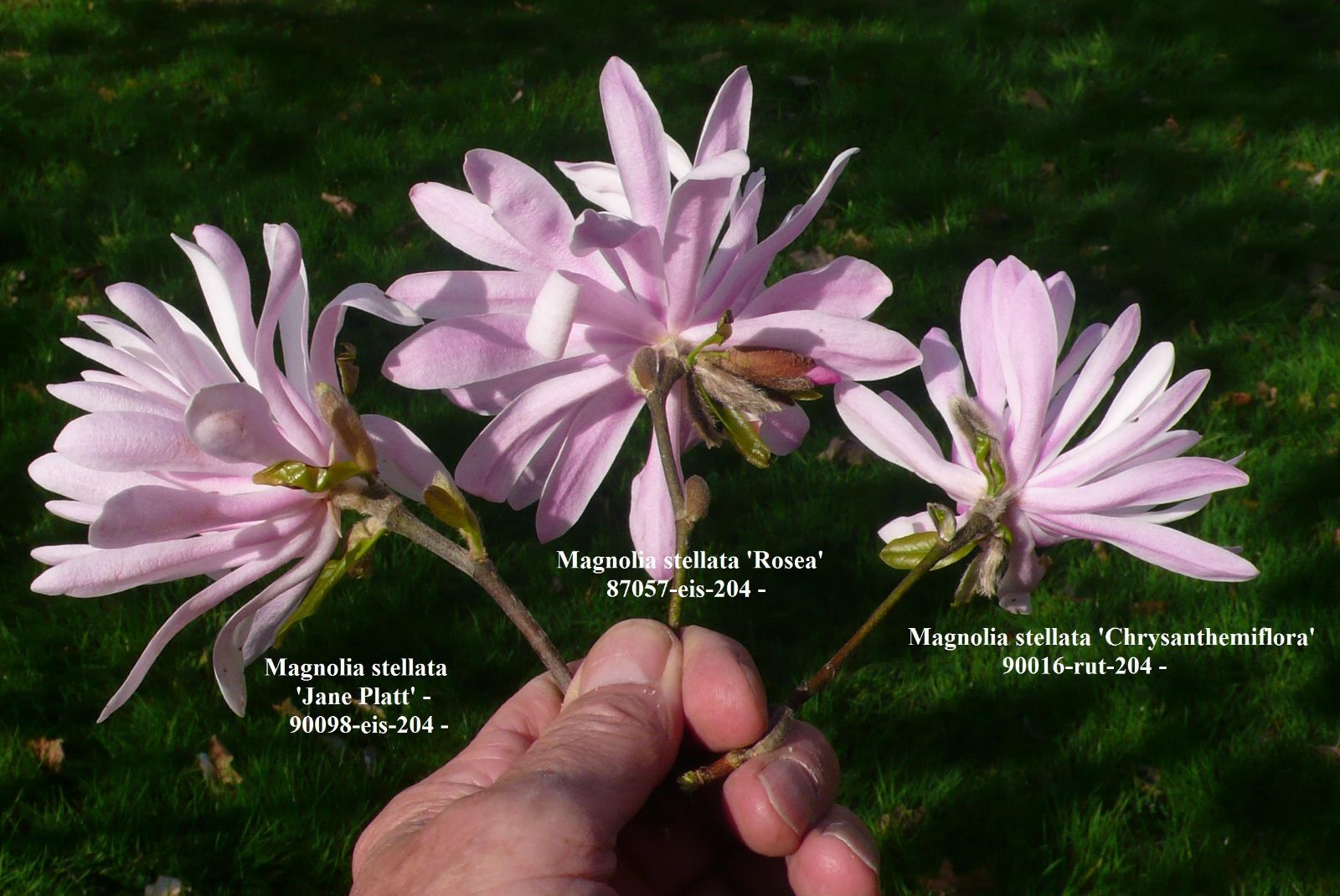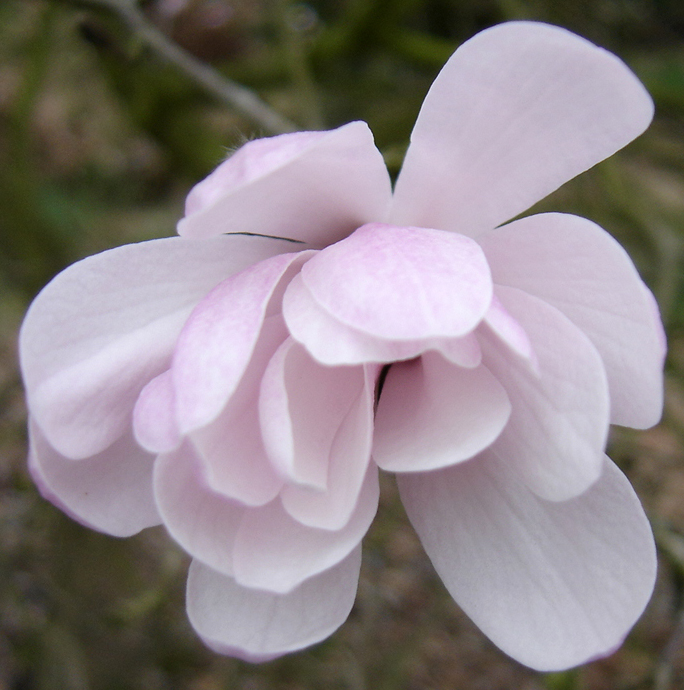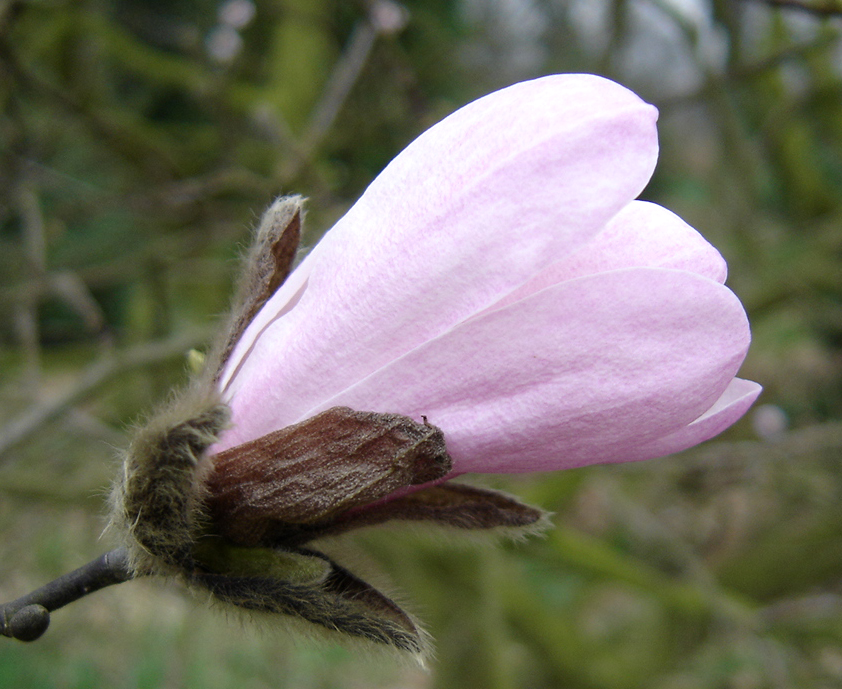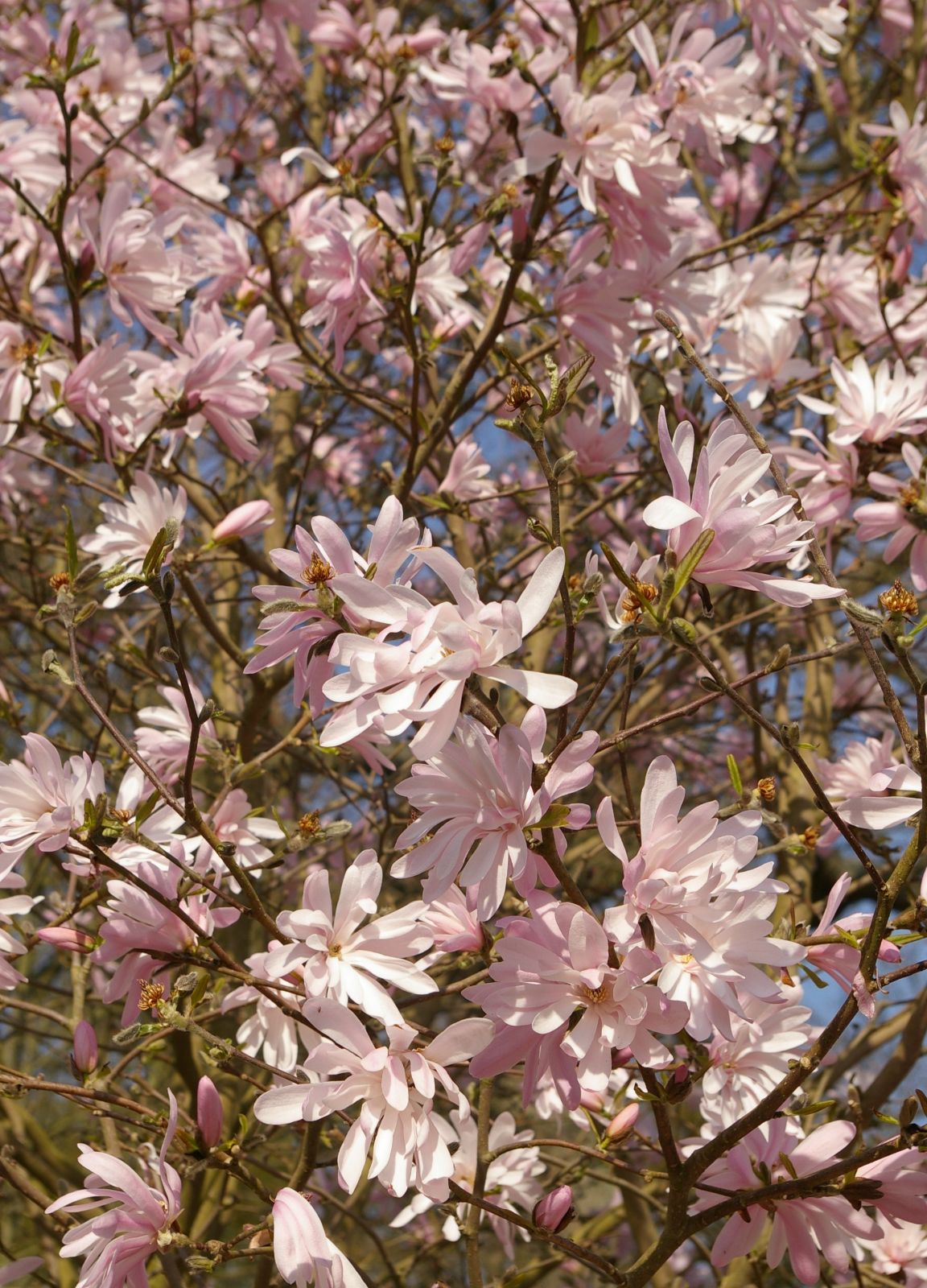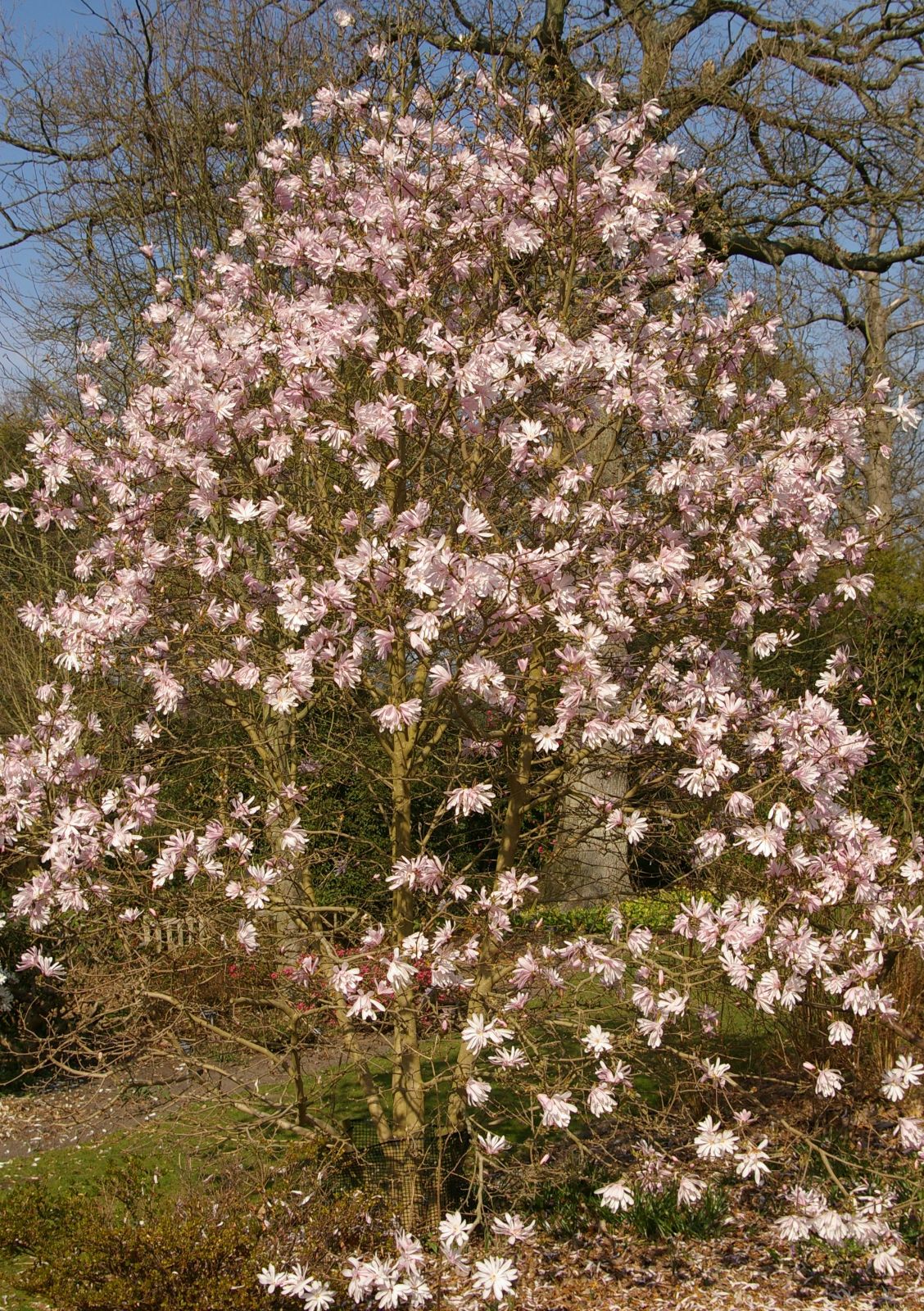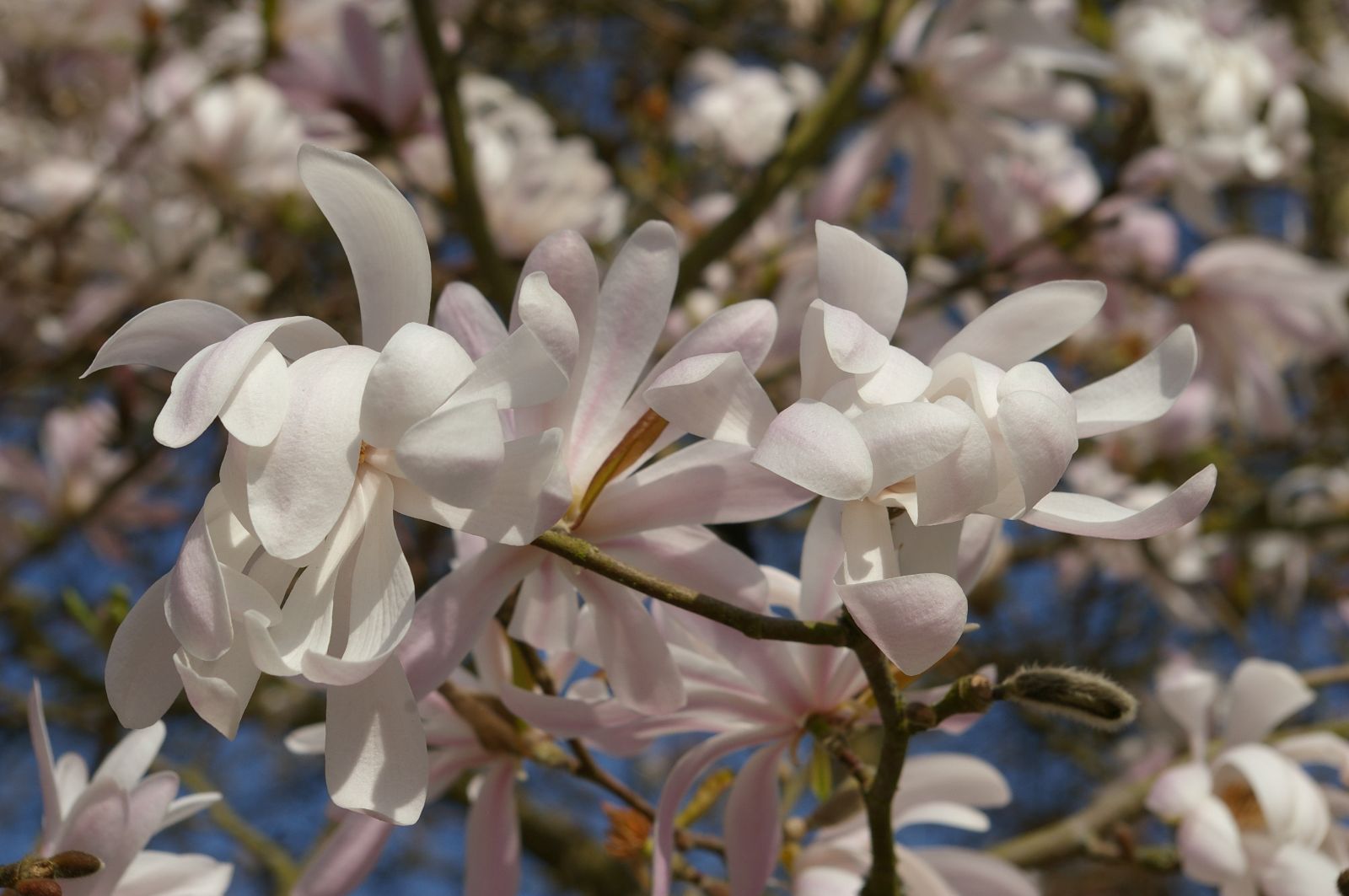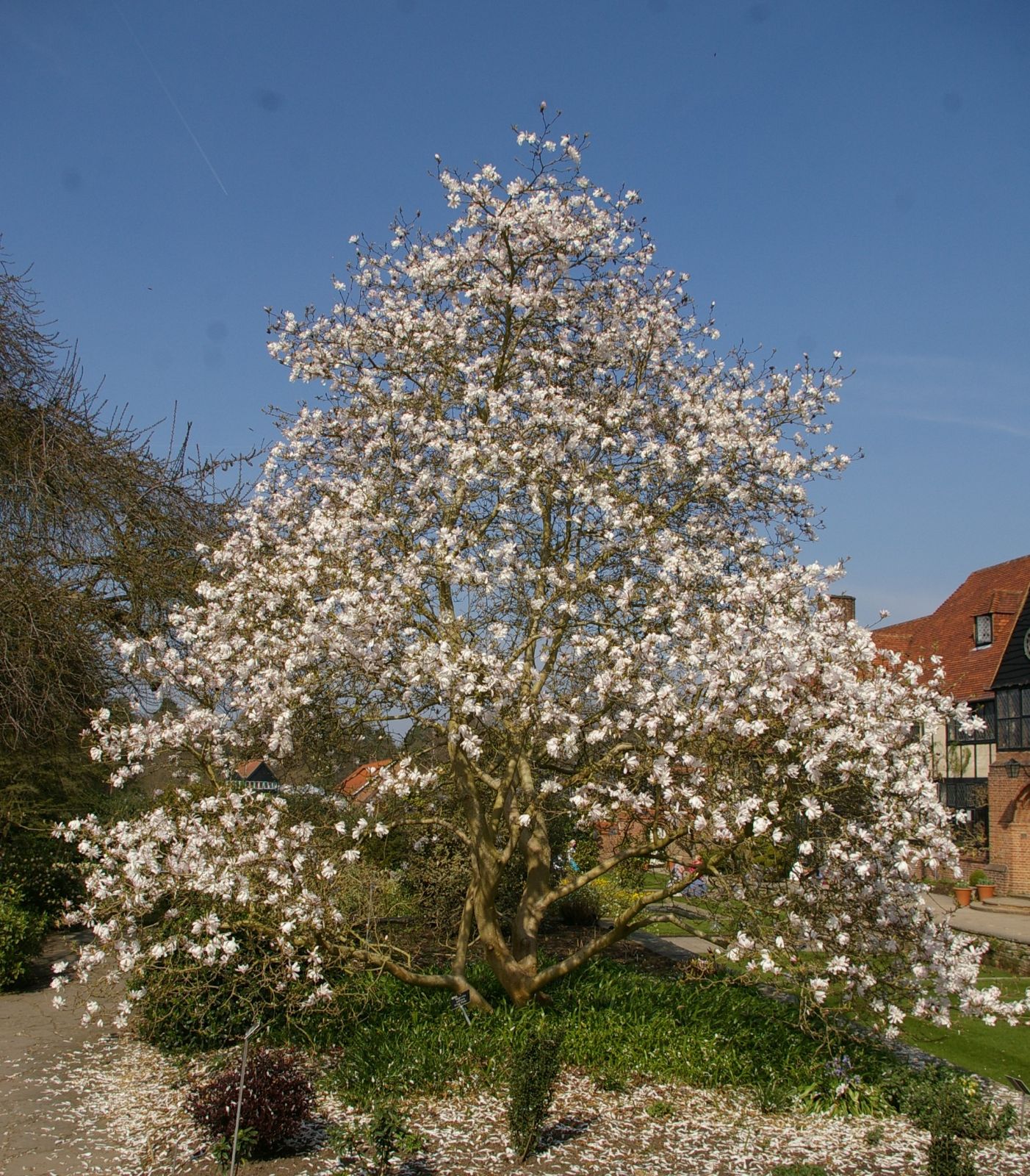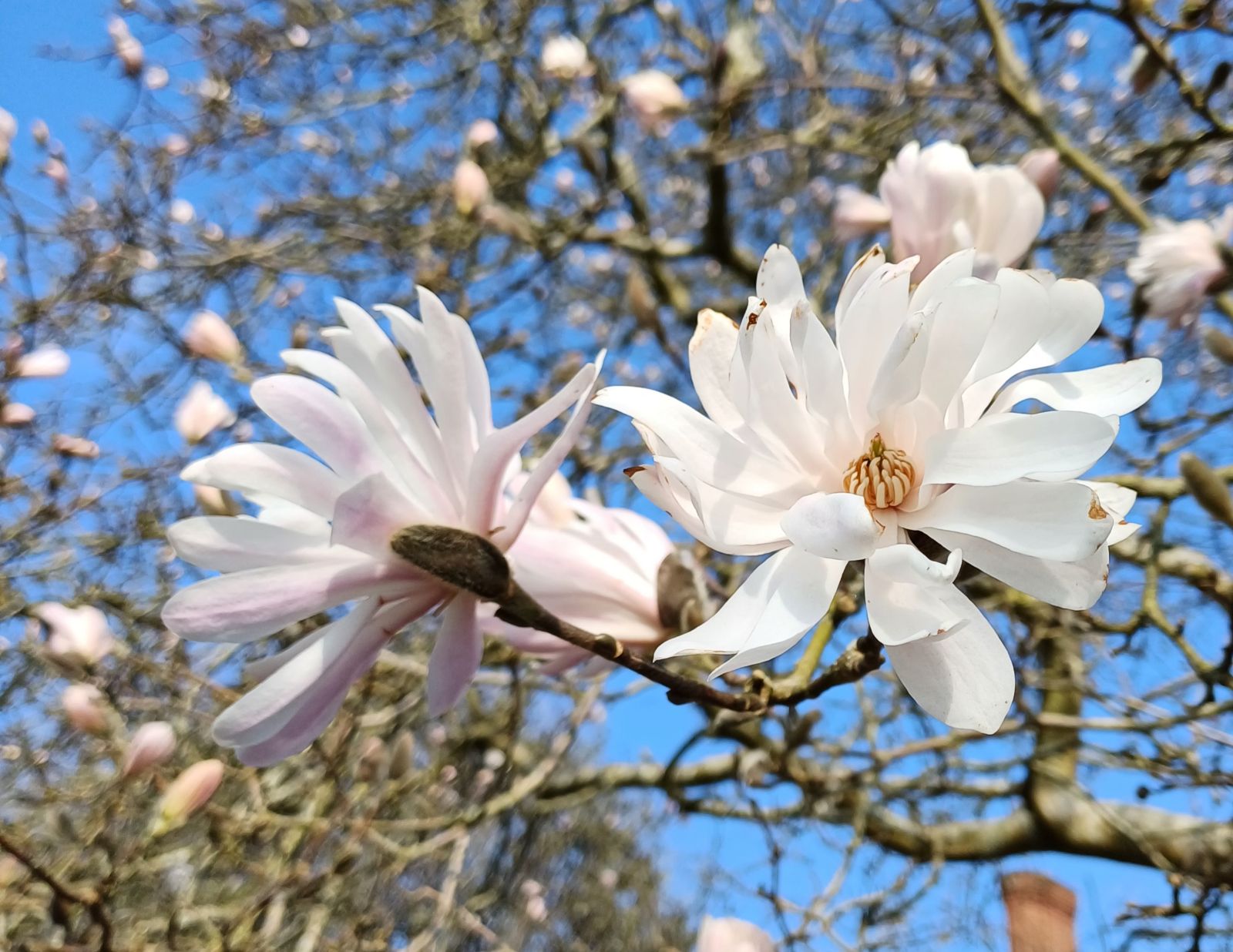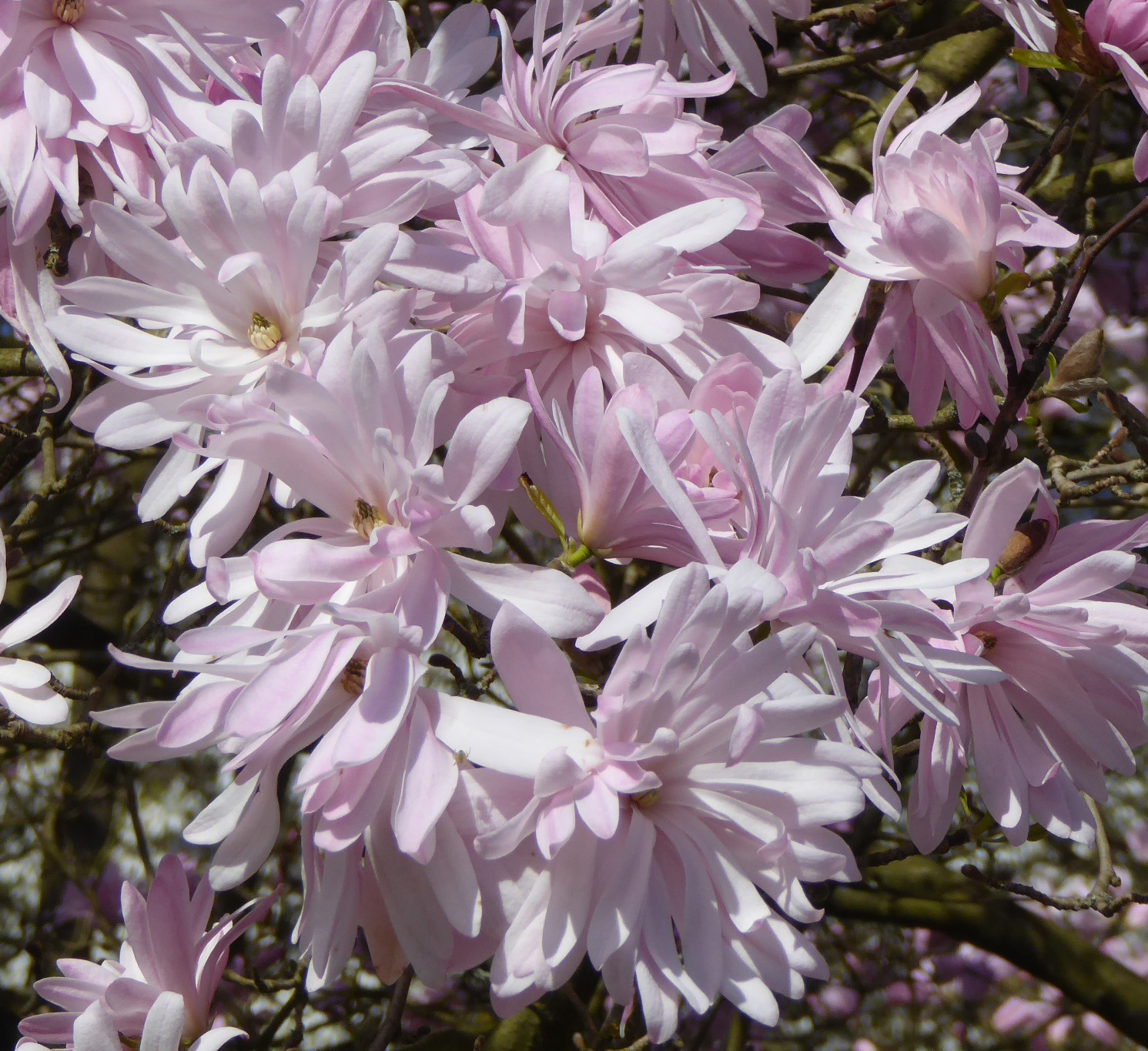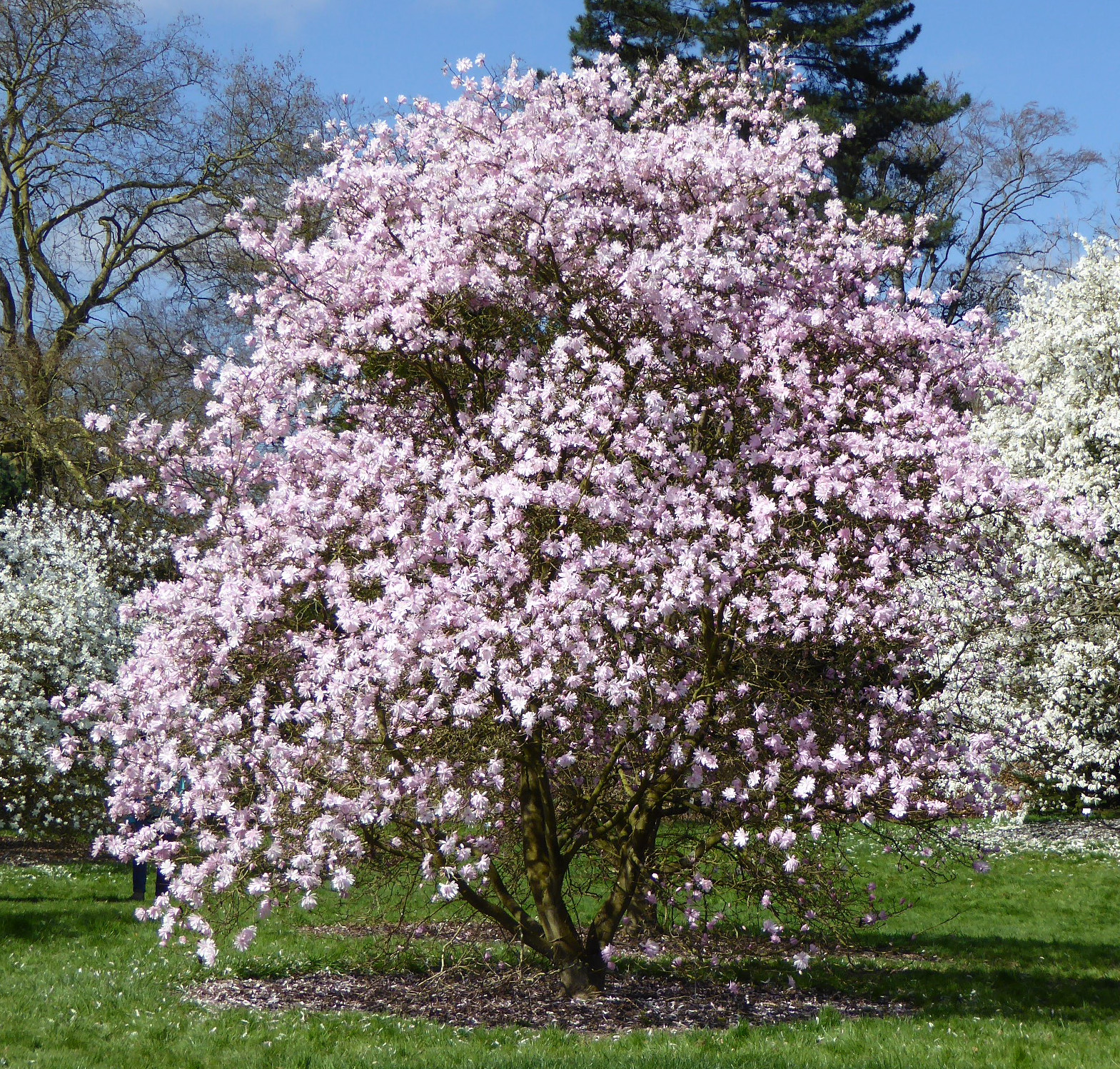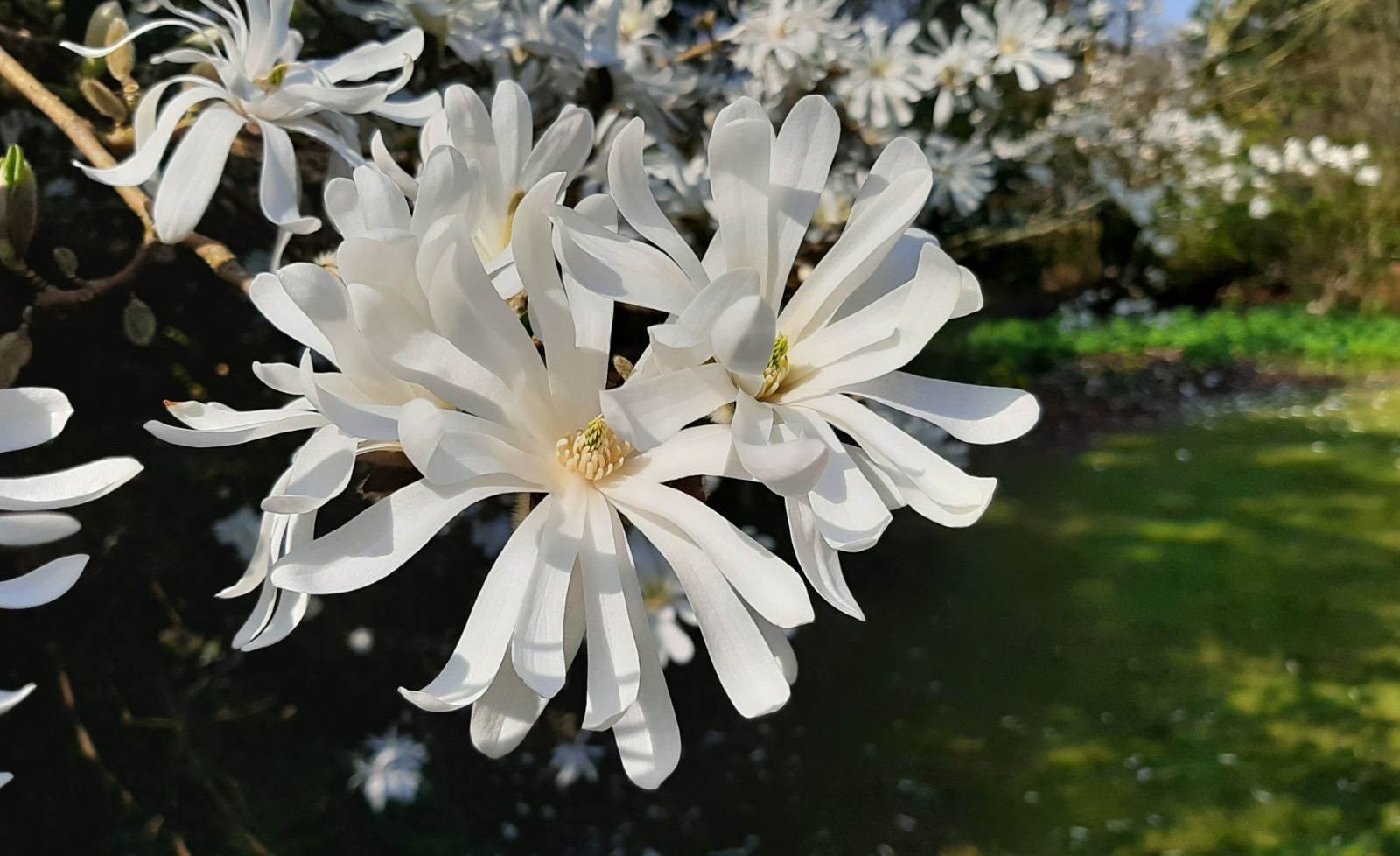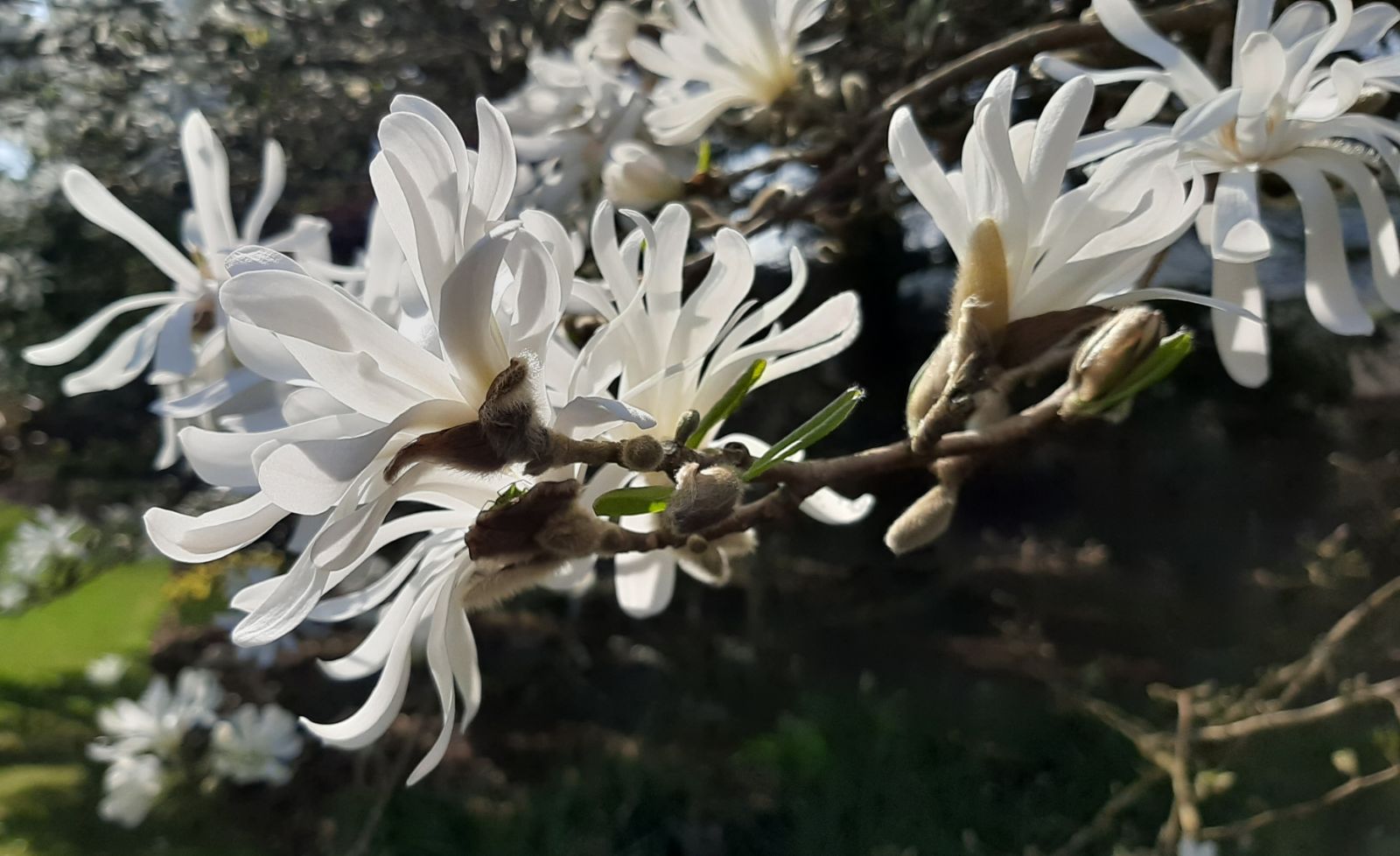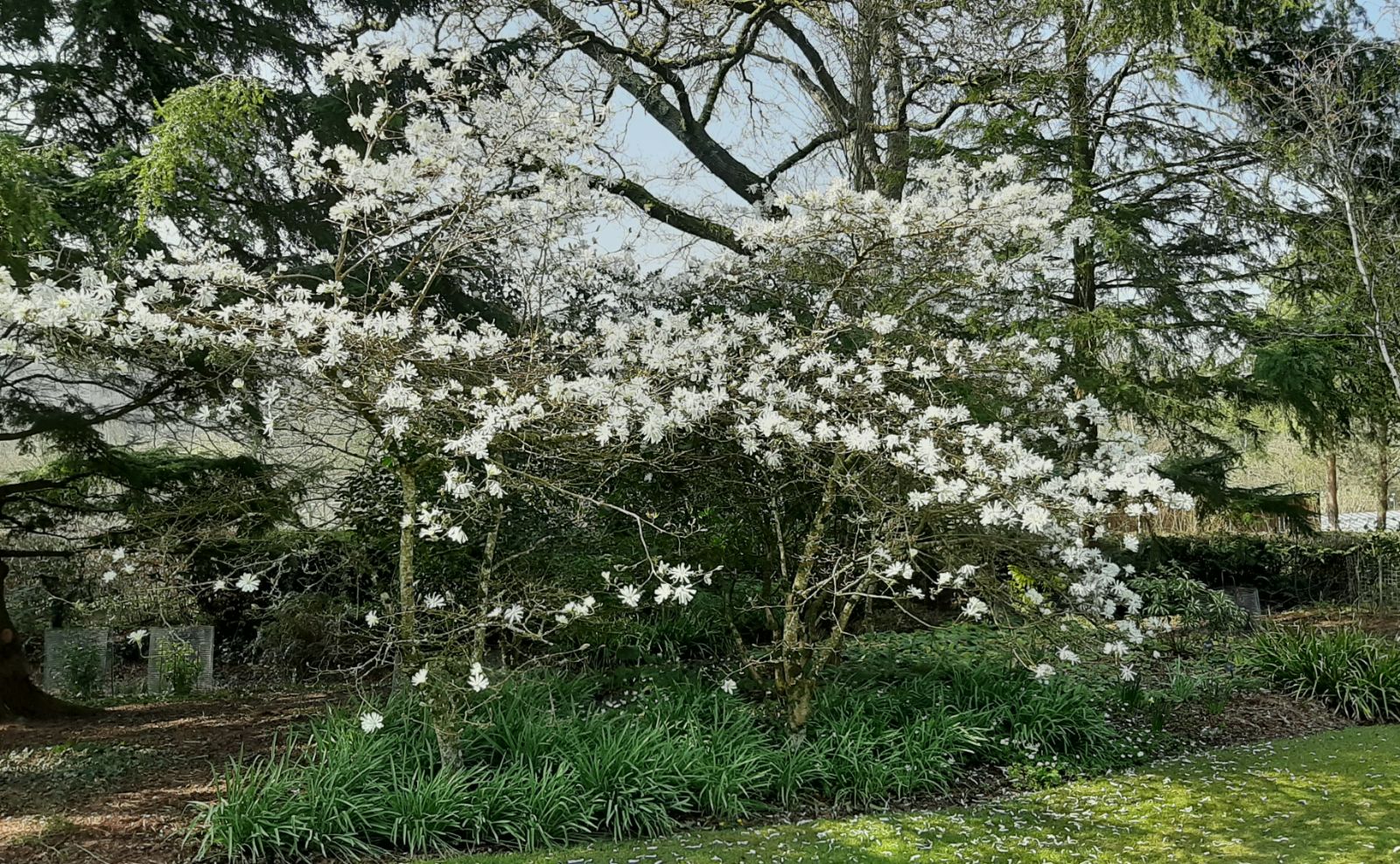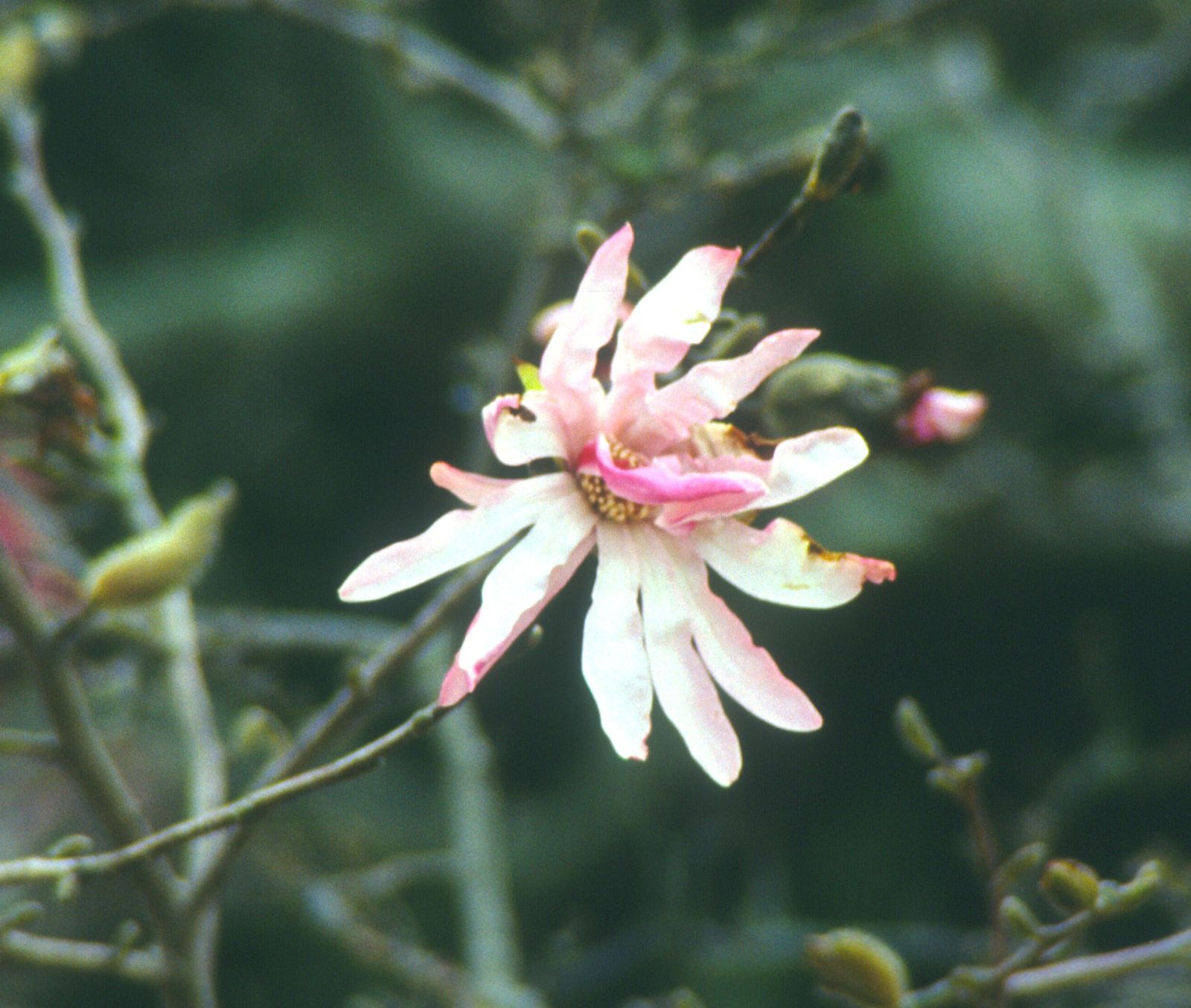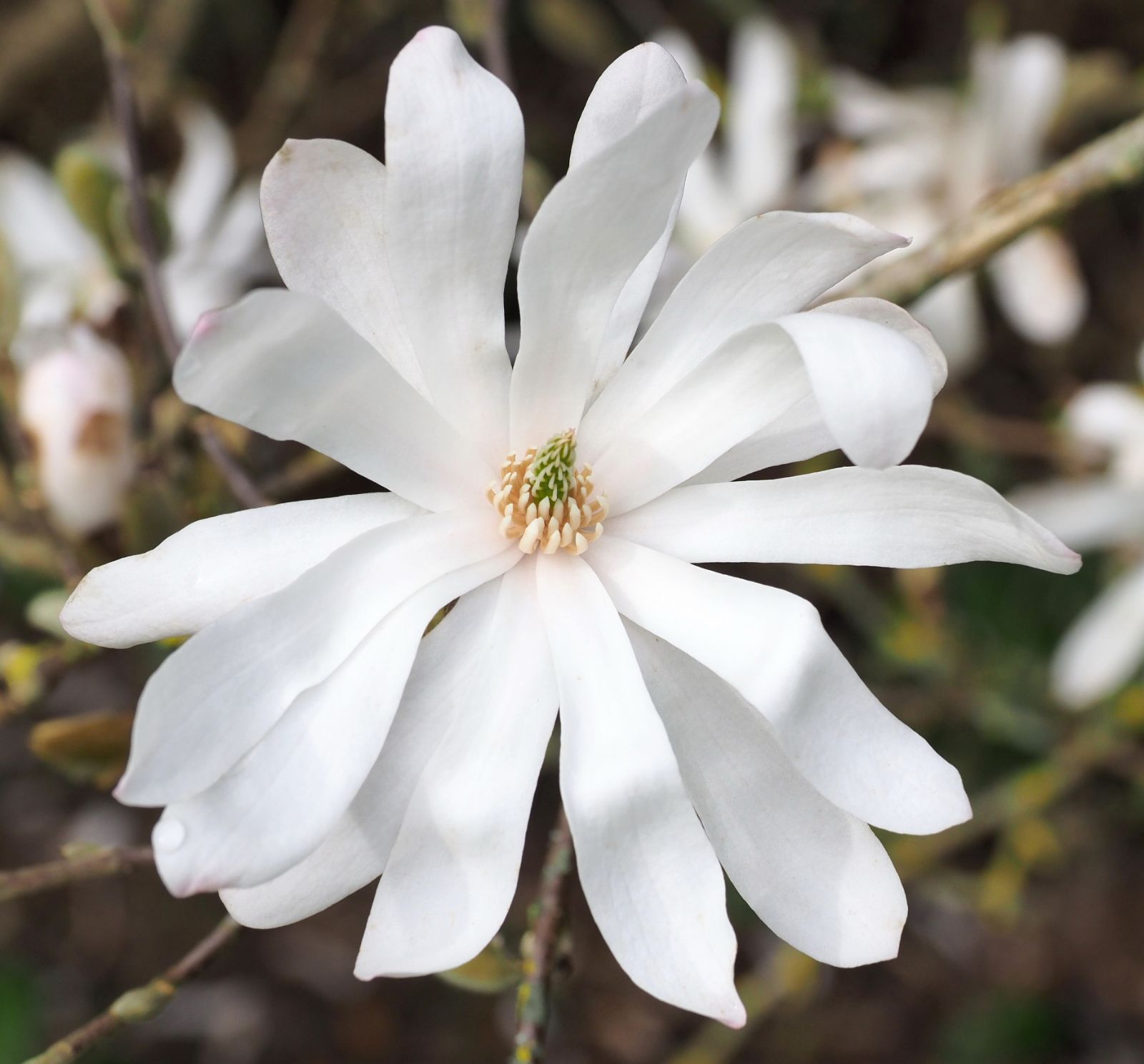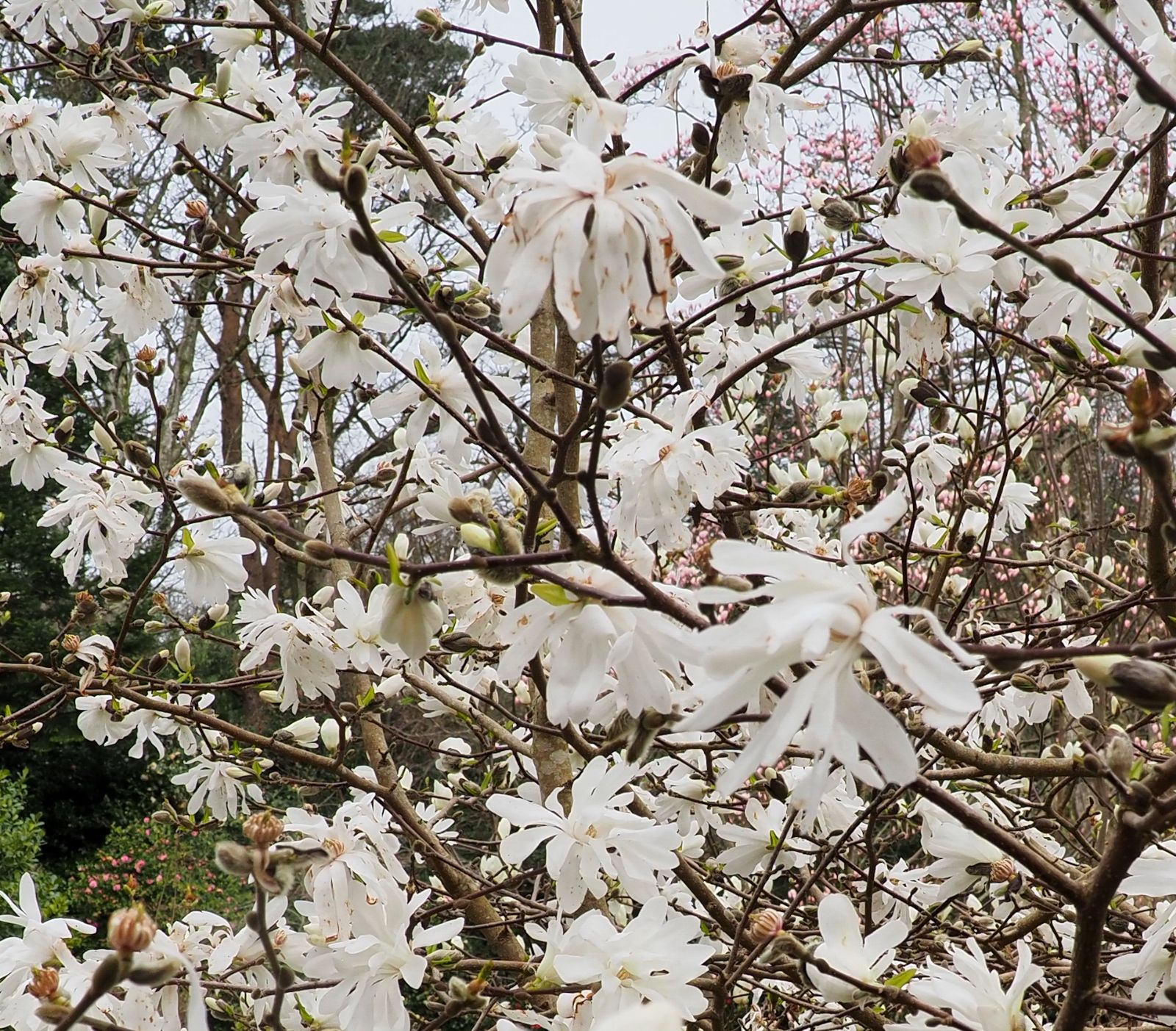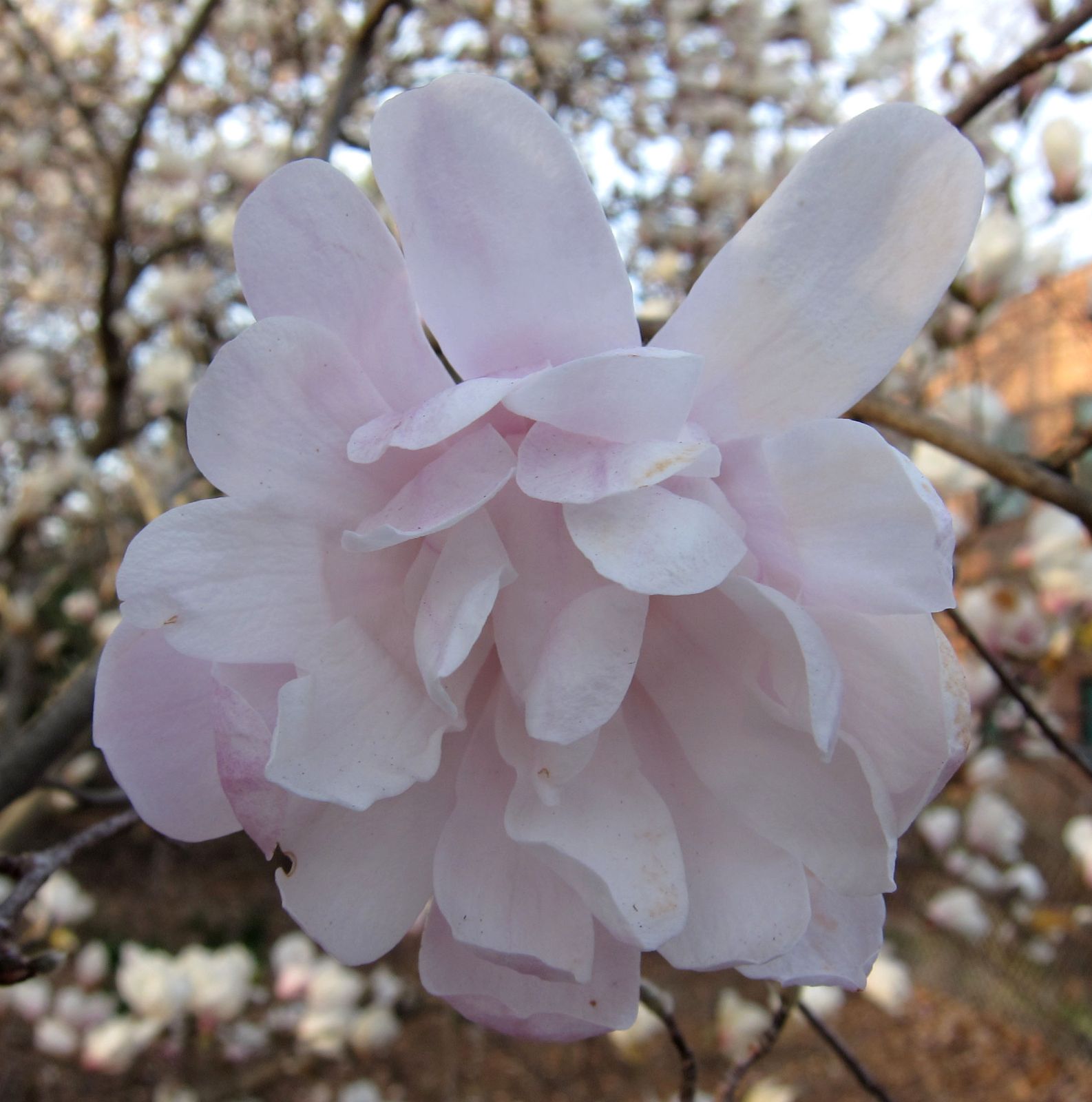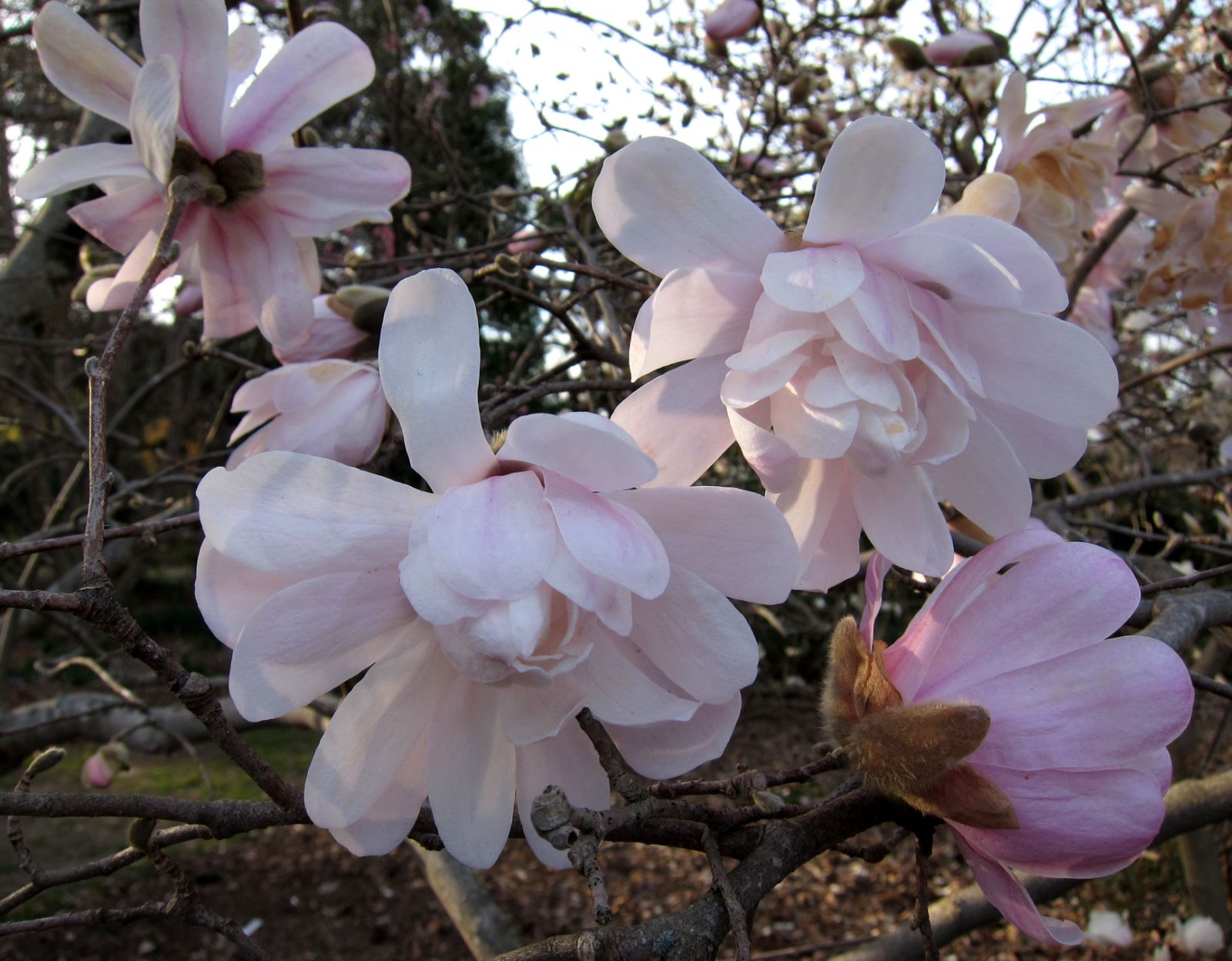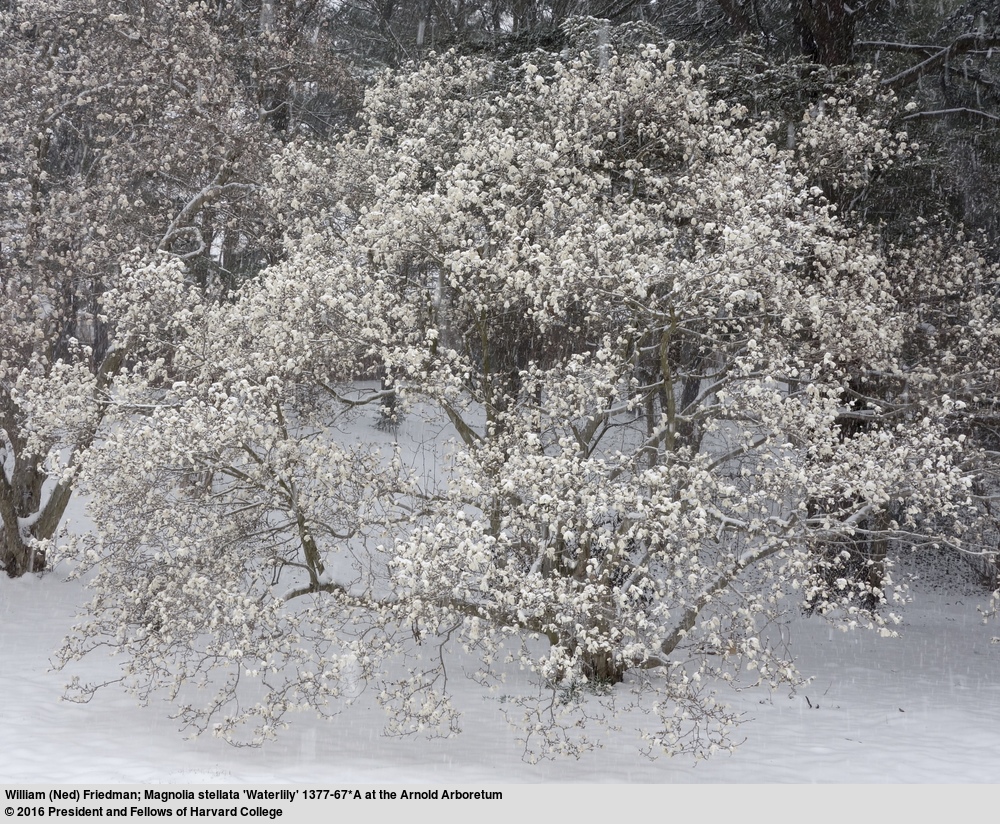Magnolia stellata
Sponsor
Kindly sponsored by
The Roy Overland Charitable Trust

Credits
Julian Sutton (2022)
Recommended citation
Sutton, J. (2022), 'Magnolia stellata' from the website Trees and Shrubs Online (treesandshrubsonline.
Genus
- Magnolia
- Section Yulania
Common Names
- Star Magnolia
- Shide-kobushi
- xing hua yu lan
Synonyms
- Buergeria stellata Sieb. & Zucc.
- Magnolia halliana Parsons
- Magnolia kobus var. stellata (Sieb. & Zucc.) Blackburn
- Yulania stellata (Sieb. & Zucc.) Sima & S.G. Lu
Infraspecifics
Other taxa in genus
- Magnolia acuminata
- Magnolia × alba
- Magnolia amabilis
- Magnolia amoena
- Magnolia aromatica
- Magnolia biondii
- Magnolia × brooklynensis
- Magnolia campbellii
- Magnolia cathcartii
- Magnolia cavaleriei
- Magnolia caveana
- Magnolia champaca
- Magnolia changhungtana
- Magnolia chapensis
- Magnolia compressa
- Magnolia conifera
- Magnolia Cultivars A
- Magnolia Cultivars B
- Magnolia Cultivars C
- Magnolia Cultivars D
- Magnolia Cultivars E
- Magnolia Cultivars F
- Magnolia Cultivars G
- Magnolia Cultivars H–I
- Magnolia Cultivars J
- Magnolia Cultivars K
- Magnolia Cultivars L
- Magnolia Cultivars M
- Magnolia Cultivars N–O
- Magnolia Cultivars P
- Magnolia Cultivars Q–R
- Magnolia Cultivars S
- Magnolia Cultivars T
- Magnolia Cultivars U–V
- Magnolia Cultivars W–Z
- Magnolia cylindrica
- Magnolia dandyi
- Magnolia dawsoniana
- Magnolia de Vos and Kosar hybrids
- Magnolia decidua
- Magnolia delavayi
- Magnolia denudata
- Magnolia doltsopa
- Magnolia duclouxii
- Magnolia ernestii
- Magnolia figo
- Magnolia floribunda
- Magnolia × foggii
- Magnolia fordiana
- Magnolia foveolata
- Magnolia fraseri
- Magnolia fulva
- Magnolia globosa
- Magnolia × gotoburgensis
- Magnolia grandiflora
- Magnolia grandis
- Magnolia Gresham hybrids
- Magnolia guangdongensis
- Magnolia hookeri
- Magnolia insignis
- Magnolia Jury hybrids
- Magnolia × kewensis
- Magnolia kobus
- Magnolia kwangtungensis
- Magnolia laevifolia
- Magnolia lanuginosa
- Magnolia leveilleana
- Magnolia liliiflora
- Magnolia × loebneri
- Magnolia lotungensis
- Magnolia macclurei
- Magnolia macrophylla
- Magnolia martini
- Magnolia maudiae
- Magnolia nitida
- Magnolia obovata
- Magnolia officinalis
- Magnolia opipara
- Magnolia × proctoriana
- Magnolia × pruhoniciana
- Magnolia rostrata
- Magnolia salicifolia
- Magnolia sapaensis
- Magnolia sargentiana
- Magnolia sieboldii
- Magnolia sinensis
- Magnolia sinica
- Magnolia sinostellata
- Magnolia × soulangeana
- Magnolia sprengeri
- Magnolia tamaulipana
- Magnolia × thomsoniana
- Magnolia tripetala
- Magnolia × veitchii
- Magnolia virginiana
- Magnolia × wieseneri
- Magnolia wilsonii
- Magnolia xinganensis
- Magnolia yunnanensis
- Magnolia yuyuanensis
- Magnolia zenii
Deciduous shrub, rarely a small tree, 0.3–3 m. Bark silvery or brownish grey. Branchlets slender, green in the first year, with fine, silky hairs. Leaf blade papery, elliptic to narrowly obovate or broadly oblanceolate, 5–13 × (1–)2.5–6.5 cm; lower surface pale green, glabrous or with hairs in vein axils or on major veins; upper surface dark green, glabrous; secondary veins 6–8 on each side of midvein; base cuneate; apex rounded, obtuse, acute or shortly acuminate. Petiole 3–12 mm, glabrous; stipular scar ~½ as long as petiole. Peduncle 3–5 mm, with dense, yellow, silky hairs. Flower buds 1.5–2 cm. Flowers appearing before leaves, 5–8 cm across. Tepals 12–18(–33), the three in the outermost whorl sepaloid and usually falling early, with the stipular scales; the rest white, often flushed pink outside, narrowly oblanceolate to strap-shaped, 3.3–6.5 × 0.6–1.4(–1.8) cm. Stamens 86–99, 7–9(–10) mm; filaments 1–2(–3) mm; anthers 6–7 mm. Gynoecium cylindric, 6–8 × 2–4 mm; carpels many, narrowly ovoid, ~2 mm, distinct, glabrous; stigmas ~1.5 mm. Flowering April (Japan), February (Zhejiang, China), March–April (UK). Diploid 2n=38. (Xia, Liu & Nooteboom 2008; Spongberg 1976; Ohwi 1965).
Distribution Japan Central Honshu, around Nagoya
Habitat Forest, moist places, 30–550 m.
USDA Hardiness Zone 5-8
RHS Hardiness Rating H6
Conservation status Endangered (EN)
Well known across much of our area, the Star Magnolia combines cold hardiness and a compact habit suiting smaller gardens with profuse, many-tepalled white flowers on bare twigs late enough in spring usually to avoid frost damage. Within a few decades of its introduction Bean (1914) could claim it as the most desirable of all magnolias for small gardens, and recommended underplanting it with blue Muscari armeniacum, which flowers at the same time. Its abundance in suburban gardens contrasts sharply with its wild status in Japan, where it is a very local rarity.
Much more shrubby than its Japanese relatives M. kobus and M. salicifolia, it typically forms a dense, twiggy bush, quite slow growing but sometimes as much as 6 m tall in gardens. It is not difficult to prune an established shrub to form a small, spreading, multistemmed tree, by removing all but selected stems near the base, and raising the crown. Its flowers, with more numerous, narrower tepals which tend to flop outward to make a loose star (hence the specific epithet), easily distinguish it from these other species.
Wild M. stellata exists as many small, scattered populations at fairly low altitude in the Nagoya area, mostly in swampy ground and along streams. While there seems have been gene flow between these populations in the past, it has declined (Setsuko et al. 2007). Conservation measures include clear-cutting the habitat periodically to avoid drying of the wet areas favoured by M. stellata, and to encourage its regeneration; in the past, management for firewood production probably had this effect (IUCN 2021).
Slightly fragrant flowers open in succession over a number of weeks from late March to early May, depending on site, situation, and clone. Since the species has been cultivated in Japan for centuries, diversity in flower size, tepal number, and colour can be expected. Flowers vary in size between 7 and 10 cm across, although a vigorous American selection has produced flowers as much as 12.5 cm across. Tepal number varies enormously, anything from 12 to 40. The colour is generally white or cream, though a number of forms have a pink flush, especially when the flower first opens. Blooms withstand several degrees of frost before discolouring. Vegetatively propagated plants can flower from 18 months old.
M. stellata needs a moisture-retentive soil in a sunny position for best flowering. Acid soils are ideal, but it tolerates alkaline soils given regular mulching. It is quite hardy, usually being regarded as suitable for USDA zone 5. Some forms have a still greater frost tolerance – ‘Royal Star’, for example, is reported to have withstood temperatures as low as –37.2°C.
The first confirmed introduction to Western gardens was in 1861–2 by George Hall of Rhode Island (commemorated in the synonym M. halliana), on his return from a period spent on business in the Far East. He passed it into the American nursery trade. It is uncertain when M. stellata first came to Europe. It has been variously suggested that John Gould Veitch of the English nursery dynasty, or Richard Oldham (a collector employed by Kew) sent plants to England in the early 1860s. More certainly Charles Maries, collecting for Veitch, introduced it along with M. kobus in the 1870s.
While still very hardy by the standards of the genus, M. stellata with its narrow, low altiude range cannot match the cold tolerance of the toughest forms of M. kobus. Commonplace in Western Europe, it is recorded as far north as Trondheim, Norway (NTNU University Museum 2021). However, in Poland spur shoots, flower and vegetative buds may be killed in severe winters (Anisko & Czekalski 1991), while a discussion of magnolias in southern Finland, where only the tougher forms of M. kobus are successful, makes no mention of M. stellata (Arboretum Mustila 2021).Usually rated as hardy to USDA zone 5 (sometimes even to zone 4) it is commonly grown in much of the United States, away from very cold north-central and dry regions, as well as in southern Canada.
There seem to be no barriers to breeding between M. stellata and M. kobus; the hybrid M. × loebneri is well known from garden crosses, but also occurs where M. kobus is introduced into the wild range of M. stellata, a potential genetic threat to the species (Tamaki et al. 2021). It also hybridizes with M. salicifolia to produce M. × proctoriana, and has been used more widely by hybridists.
Very many cultivars have been selected, especially pink flowered, although their status as the pre-eminent small-garden magnolias is now severely challenged by the best M. × loebneri cultivars.
'Centennial'
Vigorous, with especially large flowers (to 14 cm across), with 28–33 tepals, usually pure white but occasionally showing some pink. One of several seedlings raised at the Arnold Arboretum from a stock of M. stellata ‘Rosea’ obtained from Veitch’s Coombe Wood Nursery in 1900; many were pure white, but Robert Hebb, then assistant horticulturist at the Arboretum noted more open flower habit and larger size of ‘Centennial’. Named in 1972, the Arboretum’s centennial. Highly rated by Philippe de Spoelberch, Belgium (pers. comm. 2021). Similar to ‘Water Lily’.
'Chrysanthemumiflora'
Synonyms / alternative names
Magnolia stellata 'Chrysanthemiflora'
American and British descriptions of this Japanese cultivar vary somewhat. Up to 25 clear pink tepals, with a darker pink line running the length of the reverse, arranged variously from erect to spreading (Gardiner 2000). Clear pink to white, more than 40 tepals; rounded crown (Lobdell 2021). The original was a seedling of M. stellata ‘Rubra’ selected by Koichiro Wada of Yokohama, Japan. It would be helpful to establish whether there really are two clones in circulation, and if so which one should bear the name.
'Dawn'
A good pale pink with 40–45 tepals on mature plants. Popularized in the 1970s by Harold Hopkins of Maryland, from the garden of Charles McAfee in Bethesda, it flowers 10 days later than most M. stellata clones, towards the end of March or in early April in eastern North America. It is unclear whether plants in Britain are true to name. Jim Gardiner (2000) felt that plants in Britain under this name might not be correct, based on tepal colour and number, although only young plants were examined.
'Dr Massey'
Synonyms / alternative names
Magnolia stellata 'Rosea Massey'
Magnolia stellata 'Massey'
Like ‘Rosea’, but with a darker pink midline on the tepal reverse.
'Jane Platt'
Awards
AGM
A vigorous, extremely floriferous, comparatively rich pink flowered clone with up to 30 tepals. It was distributed by Gossler Farms Nursery, Springfield, Oregon, from the Portland garden of the late Jane Platt, who grew it as M. stellata ‘Rosea’, which has fewer, paler pink tepals.
A similar plant, obtained from Wada in Japan, was grown by Sir Peter Smithers in Switzerland. David Clulow grew them alongside one another in Surrey, UK, and pronounced them to be the same clone.
'King Rose'
Synonyms / alternative names
Magnolia stellata 'King Rosea'
Magnolia stellata 'Rose King'
Beautiful soft pink buds opening pink-flushed white; 25–30 tepals per flower. New Zealand origin before 1988.
'Rosea'
Up to 13 pink-flushed tepals which fade almost to white as the flower ages. Introduction to the United States and Europe occurred independently. The Domoto Brothers of Oakland, California, imported plants from Japan soon after 1885, while Veitch imported it to Britain in 1893. The name has been attributed to more than one clone.
'Royal Star'
Pale silvery pink opening clear ice-white, with up to 25 tepals. Introduced by John Vermeulen and Sons, New Jersey in 1959/60, from an open-pollinated seedling of ‘Waterlily’ raised on Long Island in 1947. Highly rated by Philippe de Spoelberch, Belgium (pers. comm. 2021).
'Rubra'
Up to 14 tepals, pale pink (but deeper than in ‘Rosea’) with a characteristic purple-pink line on the reverse; somewhat scented. The original clone was introduced by Wada’s Hakoneya Nurseries, Japan, and brought to Europe in about 1925 (Lobdell 2020). Another clone was distributed under this name before 1948 by Kluis of Boskoop: it has slightly larger, scented flowers to 10 cm across, and 14 narrow tepals.
'Water Lily'
Larger than typical flowers, with more numerous tepals (Edwards & Marshall 2019) and no trace of pink (Gardiner 2000). Quite distinct from the American ‘Waterlily’ clones with which it has been confused in the literature. Widely grown in Britain, perhaps of Japanese origin (Edwards & Marshall 2019).
'Waterlily'
Three similar but distinct North American clones carry this name (Treseder 1978). Each is vigorous, carries pink-flushed flowers with over 30 tepals, flowering 1–2 weeks later than other forms of M. stellata. All are quite distinct from pure white ‘Water Lily’ as grown in Britain.

